Rate Cut, Inflation, and Food Prices
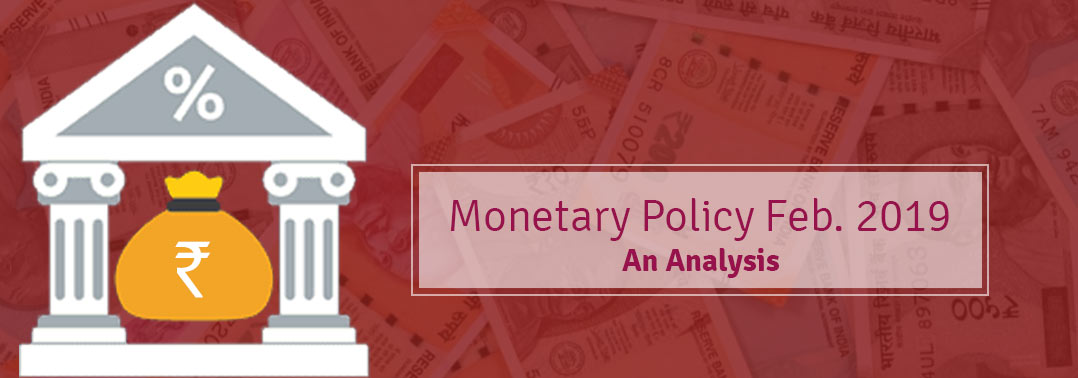
The Monetary Policy Committee’s recent decision to cut rate by 25 basis points does not come as a surprise, since CPI inflation has fallen from 3.4% in October 2018 to as low as 2.2% in December 18. However, a closer analysis of different price components reveals that the Committee may have taken a bait, which was not called for. It would not be surprising if RBI goes back to monetary tightening a few months from now, whenever crude prices record a sudden, sharp jump or food prices emerge from the current deflationary trend!
A rate cut just six months after increasing it, and a change of stance from “calibrated tightening” to “neutral” — having moved the other way round just four months ago — gives a sense of the highly volatile price environment and policy challenges being faced currently.
While the Committee has decided to aid growth, as inflation appears under control, the actual inflation condition is not so benign. More worryingly, the three different groups, namely, food, fuel, and items excluding food & fuel (broadly, core inflation) are showing highly divergent trends. While food inflation has fallen sharply (with about 30% of the items showing deflation), inflation of fuel group stands at 4.5%, which, as against inflation of 8.5% in October, implies a huge respite.
However, core inflation, the most important of the three, stood at 5.6% in December, 2018—down from 6.2% in October, but still extremely high and close to the upper-end of the stipulated inflation range of 4% +/- 2%. This remains a serious concern; and should have been the determining factor, rather than the decline in other prices. Even though the Committee, and the economy, might be drawing comfort from low food prices, it is not a good sign; and is, in fact, an important reason for the current distress in the agricultural sector. The prices need to be supported through government measures (may be by incentivizing exports, and so on).
Whether a rate cut can provide any support to food prices is difficult to visualize. Indeed, the ability of a rate cut (or increase) to impact CPI inflation itself is not clearly established. It is estimated that a rate cut impacts the economy only after 12–18 months. Thus, the last rate cut of August 2017 should have increased inflation in the last few months. However, inflation has actually come down—that too, sharply, in the past six months.
An interesting aspect of the current monetary policy environment is that inflation is falling consistently below projections. The August 2018 policy review projected inflation to be 4.8% in H2 FY’19. The projection came down to 3.9–4.5% in October 2018 policy and 2.7–3.2% in December review: over 2 percentage point correction in just four months!
Against the projections, actual inflation has come to be 2.6% in the third quarter (Oct.–December, 2018); and is expected to remain at this level during Jan.–March, 2019 also. The current low inflation trend may give hope that this would be the beginning of a benign rate environment. However, it is difficult to visualize that, considering the existing pressure on core inflation and the uncertainty around both food & fuel prices.
Beaches, Golf, and (Machine) Learning
A Hands-on Skill Building Program for CXOs

CXOs, VPs, Directors, and top-level managers are critical assets in ensuring success for their organization. However, in today’s rapidly evolving world, it is vital for them to be not only business smart, but also tech savvy.
The demand now is for business leaders with a tech-driven mindset, who can harness the potential of cutting-edge technology, like Artificial Intelligence & Machine Learning to make sure their organizations remain agile, flexible, and adaptive to change.
It is with this objective in mind that Career Launcher is organizing a two-day, 13-hour, Machine Learning Retreat for Top Management from a diverse set of companies. An intensive, hands-on practical introduction to ML, the retreat has been designed in a way that even those from a non-programming background can enjoy and learn.
Why should you join this Retreat?
It is an ideal opportunity for you to gain an insight into how prediction problems are solved; understand how Artificial Neural Network implementation is helping industries; learn how to enable voice tech for your customers; and see how sales can be increased using ML, among others.
Dates: February 17 (Sun.) & 18 (Mon.), 2019
Venue: Azaya Beach Resort, Goa
For more details on Career Launcher’s Machine Learning Retreat for CXOs, please click here
Machine Learning for Students
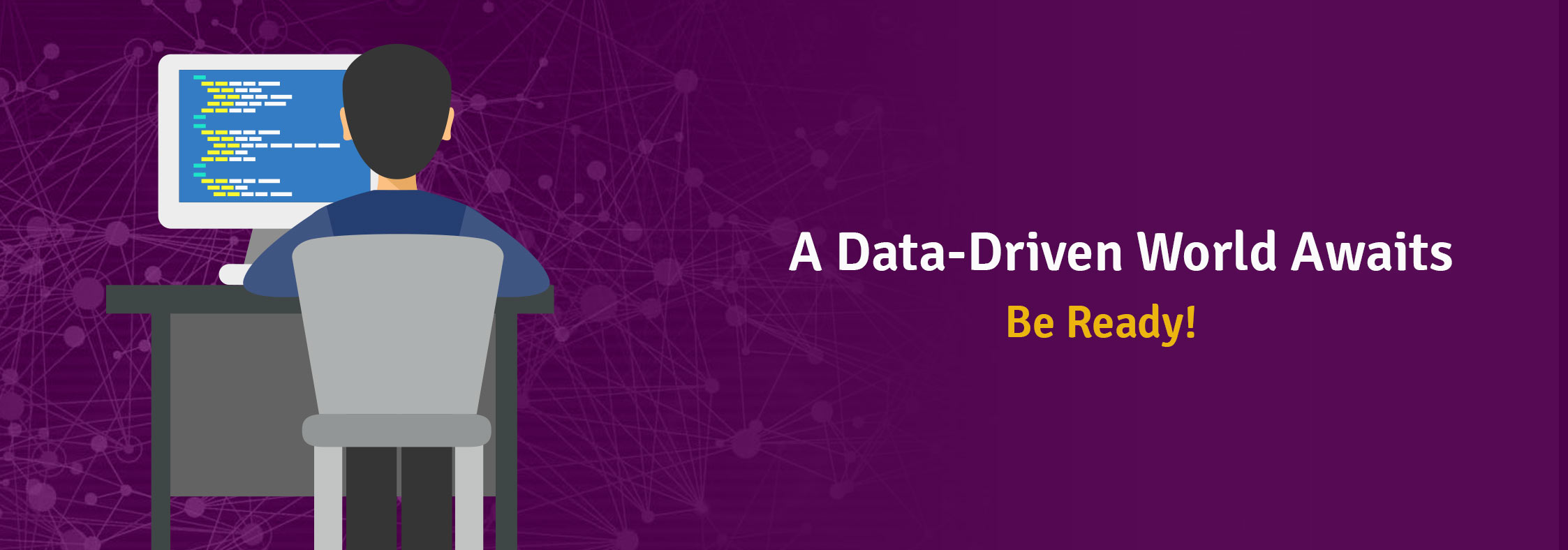
As the development of Artificial Intelligence (AI) progresses, the more immediate impact is in its ability to analyze and bring meaningful insights and predictions from the vast stockpiles of data available to companies today. The sub-domain of AI that deals with this field is Machine Learning (ML). The biggest differentiator going forward for businesses will be in their mastery of the possibilities and limitations of ML.
Just as one cannot, in this day and age, function without being able to read and write, in tomorrow’s world ML will become the new literacy. According to the World Economic Forum, in the next five years over half of the jobs in the world will be impacted by AI; and many of those people will need to be reskilled.
Along with the great advances of ML, has come its democratization. A vast array of powerful tools is available for everyone; and they are free to use, free to take apart, learn from, and improve upon. No longer is it solely the domain of the upper echelons of mathematicians and computer scientists.
So, not only can anyone learn machine learning, in fact, everyone should learn it. The Machine Learning Program for Students is an initiative of Career Launcher to bridge the skill gap that exists in the country, in terms of shortage of ML professionals. The Program seeks to benefit students in their pursuit of an industry-relevant profession that is here to stay.
Career Launcher offers two programs in Machine Learning for students:
1. Machine Learning Fundamentals
2. Advanced Machine Learning
The Machine Learning Fundamentals Program is an introductory course, which will prepare you for the highly charged data-driven world by equipping you with the right skills. You will work on datasets provided by Career Launcher’s partner companies; be taught the techniques that are used to build machine learning models; and get real-time exposure to employment-relevant hands-on projects which will help you become proficient in the understanding—and application—of ML.
The Advanced Machine Learning Program picks up where the Fundamental course ends, and covers boosting algorithms, Artificial Neural Networks, building APIs, search engines, and much more.
With the completion of this course, you will become proficient in the language of ML, be able to build your own ML algorithms, and be in a position to fluently understand data sets as you will now be competent in making use of data.
In short, this program holds the promise of transforming you into a skilled professional, well-skilled to land any Data Science-related job.
Why you should choose Career Launcher’s Machine Learning programs:
1. Internships & placements: Guaranteed internships and placements at CL Educate and other partner companies as a Data Science & Machine Learning professional is the key take-away.
2. Real-time exposure and industry-relevant projects: As part of the program, you will directly work on data sets provided by partner companies. What’s more, you will also get the opportunity to work on real-world business problems which are closely related with what a Data Science professional is actually expected to deliver at the workplace. This exposure will provide a much-valued boost to your CV.
3. Hands-on, distraction-free classroom learning: While there are lots of free ML courses available online, nothing beats the guidance that comes with offline classroom courses. In a classroom setting, not only are you able to better absorb what is being taught, but can also directly ask and get answers to your queries on-the-spot.
Want to know more about our Machine Learning Programs? click here
Prepare with the Only Certified Training Provider for TCS iON CCQT

If you are an undergraduate student who wants to get placed with a top corporate, look no further than TCS iON’s CCQT, whose scores are used by over 130 top companies for recruitments. Not only will this test eliminate the need to depend exclusively on your college’s placement cell, but it will also give you the opportunity to be recruited by a corporate that might not visit your college during on-campus placement drives!
As the only certified training provider for CCQT, Career Launcher is offering several packages (see table below) for students aspiring to ace the test.
| Features | Test Series | Silver | Gold | Platinum |
FREE Access to https://myzone.careerlauncher.com |
1 year | 1 year | 1 year | 1 year |
Mock Tests as per the CCQT Pattern |
8 | 8 | 8 | 8 |
CCQT Coaching |
- | 40 hrs | 75 hrs | 75 hrs |
Personality Development Exercises |
- | - | Included | Included |
Mock Interviews (EvueMe) + Feedback |
- | - | 2 | 2 |
Personality Enhancement Mentoring (Online) |
- | - | 5 hrs | 5 hrs |
Face-to-Face Interviews |
- | - | - | 2 |
CCQT Exam Fee Cashback |
- | - | Included | Included |
Note: |
₹ |
₹ |
₹ |
₹ |
The Test Series Package
Purchasing this package will give you access to the following:
- Career Launcher platform 1-year access to this student-recruiter interface dashboard, which will keep you abreast of the latest developments in the job market, as well as in the education domain.
-
8 Mock Tests
Get acquainted with the CCQT pattern by taking these mocks that are designed as per the previous CCQT papers.
The Silver Package
In this package, in addition to the features available in the Test Series, you will have access to:
-
CCQT Coaching
40 hours of live coaching on the subjects and topics relevant for the test.
The Gold Package
In this package, in addition to the features available in the Silver Package, you will have access to:
-
CCQT Coaching
35 additional hours of live CCQT coaching on the relevant topics & subjects
-
Personality Development Exercises
These exercises are specially designed to hone your soft skills, which are crucial to ace any job interview.
-
Mock Interviews and Feedback
Attend 2 mock interviews, and gather valuable feedback on your performance from industry experts. You will also be trained in the art of appropriately responding to all interview situations.
-
Online Personality Enhancement Mentoring
5 hours of mentoring with experts who specialize in personality enhancement and refinement.
-
CCQT Exam cashback
Your CCQT fees are included in this package.
The Platinum Package
Our topmost package, in this, in addition to the features available in the Gold Package, you will have access to:
-
Face-to-Face interviews
2 face-to-face real-time interviews with industry experts that will have you well-prepared to face the interview panel of the corporate of your dreams.
So, why wait? Start your CCQT preparations today with Career Launcher's online coaching program for TCS iON CCQT — the only certified CCQT training provider.
Why Non-tech, Non-management Undergraduates should take the CCQT Seriously

Leading companies in India are on the lookout for the best and brightest of college students for employment. Campus placements are on the rise, with major MNCs taking the effort to source fresh talent from college campuses itself. However, there is an unfair bias in terms of placement opportunities, with the best packages being offered those who have a professional degree in either tech or management.
Where does that leave non-tech, non-management undergraduates?
As a non-tech, non-management college student, with your whole life ahead of you, how do you align your personal interests with the right career? How do you come in contact with the top employers in your chosen field? How do you distinguish yourself and grab the attention of top employers? How do you carve a niche for yourself and announce that you are just the right fit for them?
You do that by taking charge of your future and making the most of existing opportunities.
Take CCQT seriously
The future can seem bleak and scary for a regular undergraduate student, who has not studied management, or finance, or economics, or tech, or a field of study that sees maximum placement offers. TCS iON’s CCQT (Common Corporate Qualifier Test) pre-qualifies you for corporate hiring, thereby giving you the best shot at being recruited by top companies. More than 130 corporates, including Taj, Kotak Mahindra Bank, Bajaj, RBL Bank, ICICI Lombard, Asian Paints, Bridgestone, Kirloskar, Eureka Forbes, TATA AIG, and Go Air, among others have already started using the CCQT as a selection criterion for their hiring process.
Don’t get left behind.
After all, the earlier you start working with a top company, easier it will be for you to climb the corporate ladder.
Take charge of your future today with Career Launcher's online coaching program for TCS iON CCQT — the only certified CCQT training provider.
TCS iON CCQT: An Undergraduate's Best Shot at Landing a Job with 130+ Corporates

CCQT, or the Common Corporate Qualifier Test, is of late carving a niche for itself. Conducted by TCS iON across all major cities in India, it is a 2-stage assessment for college students to qualify and get their profile shared with 130+ corporates.
Academic excellence is no guarantee for placement
The end goal of any college-going student, who has the ambition to make a name in the corporate sector is to land a job with a top corporate through campus placements. However, academic excellence does not always ensure one ends up in their dream company. A lot of factors can come in the way. For instance, the student’s college might not have a placement cell, or the company he/she may want to work in might not necessarily visit their campus for placements.
In such a situation, what are the options left for the student?
Enhance your chances for placements
Besides the fact that not every company visits every college for campus placements, not all students get offers during placement drives. Ask around, and you will find that securing off-campus employment is no piece of cake. This is why on-campus placement is taken very seriously.
To improve their chances of getting job offers during these placement drives, students need to boost their credentials. This is where CCQT plays a crucial role.
130+ corporates use CCQT to shortlist recruits
From the perspective of a college student, CCQT is the ticket to their dream job and a corporate career. Over 130 top recruiters, including Taj, Kotak Mahindra Bank, Bajaj, RBL Bank, ICICI Lombard, Asian Paints, Bridgestone, Kirloskar, Eureka Forbes, TATA AIG, and Go Air, among others have partnered with TCS iON. This means these corporates will now use CCQT to shortlist new recruits. So, it makes sense for you to take the test!
Preparing for CCQT
CCQT is conducted in 2 stages. Stage 1 is further subdivided into a Mandatory section and an Optional section (on IT). The Mandatory Section involves a 90-minute test of 120 questions and 120 marks.
Career Launcher offers an exclusive training program on the Mandatory section to help accelerate your corporate journey. Give yourself the best shot at landing a job with top 130+ corporates by enrolling for Career Launcher’s online coaching program for TCS iON CCQT — the only certified CCQT training provider.
Budget 2019: Reformist or Populist?
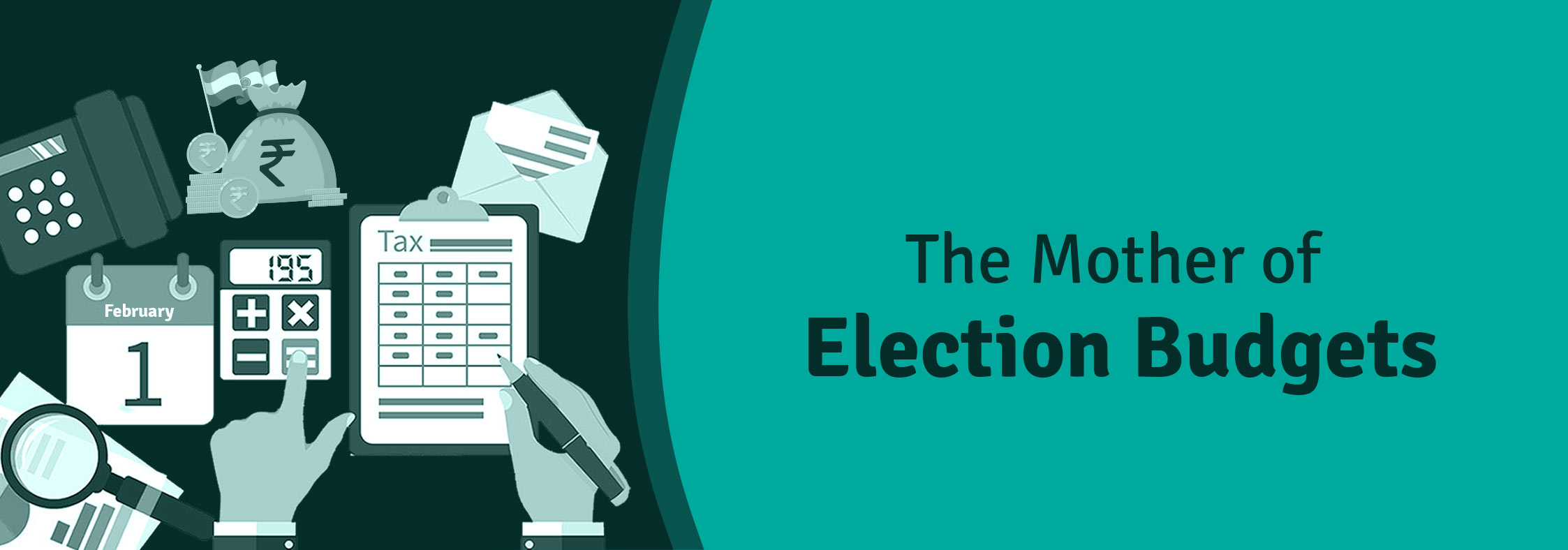
The Interim Budget 2019–2020 has stirred both good and bad emotions equally. Some opine it as a politician’s budget, whereas others believe it to be financially prudent. Barring the Opposition, the ruling party, at the verge of General Elections, is singing hosannas about it.
The hackneyed themes of farmers’ welfare, middle classes’ development, and financial inclusion were dealt well by the Finance Minister Piyush Goyal. Refreshed promise of prosperity (Achhe Din) was again highlighted by Prime Minister Narendra Modi, who referred the benefits ushered in by the annual financial statement as a “trailer”, thus hinting towards a great movie.
With grand schemes like the Pradhan Mantri Kisan Samman Yojana Nidhi (PM-KISAN), an assured income support scheme for small and marginal farmers across the country (for those having cultivable land of up to 2 acres); relief for small taxpayers (with income of up to INR 5 lakh is exempted); bank interest (exempted from TDS); and pension scheme for the unorganized sector (with INR 30,000 per month envisaged after 60 years of age) the question is how to manage the fiscal deficit.
Goyal said that fiscal deficit would remain at 3.4% of the GDP in FY’19 and FY’20. Thus, India is perhaps on a “glide path” to achieve the original target of 3%. On assuming office in 2014, the BJP had promised to hit 3% by FY’18. So, a politician may give 10/10 to this budget, but an economist would hesitate to do so.
Also, the PM-KISAN scheme is applicable only for landowners and not for tenant farmers. Although, the tax and expenditure reforms are a new beginning with direct income support to the Indian farmers, the reforms are delayed—and perhaps marred—due to apprehension regarding the upcoming elections. These positive changes should have come earlier, with more focus on their implementation.
Therefore, even though it is a reformist budget, it is being debated as ‘Populist’, ‘Propaganda’, and ‘The Mother of Election Budgets’.
The Important Proposals
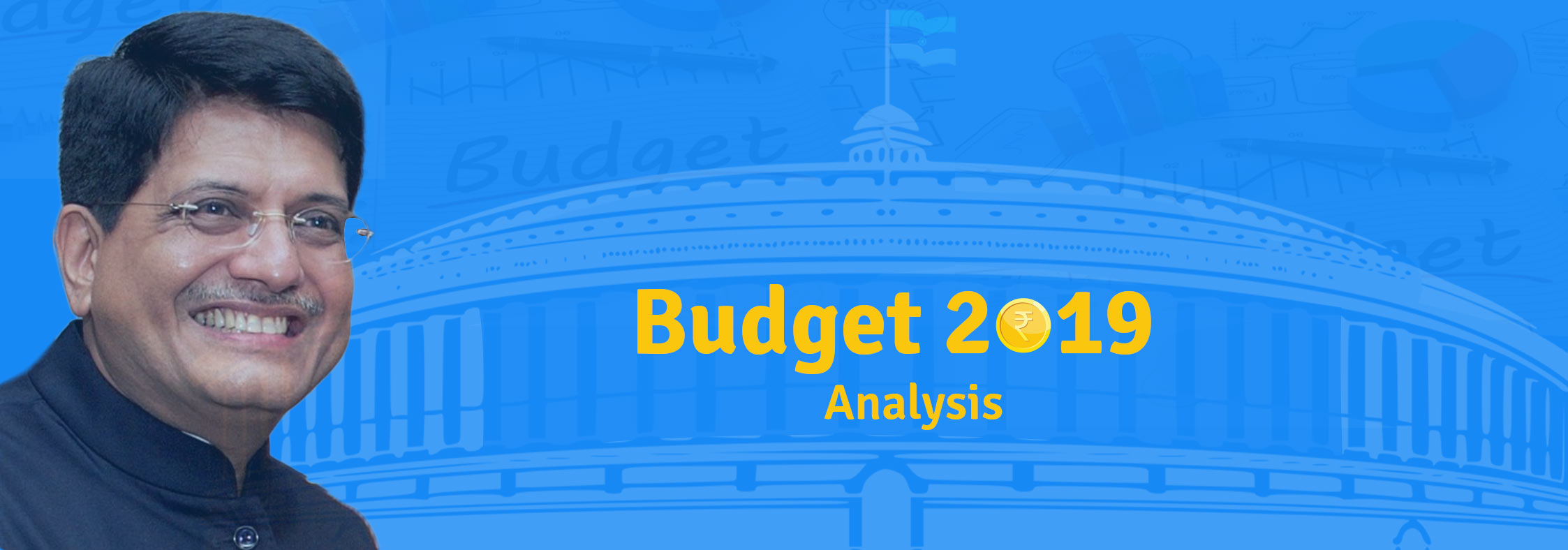
The Union Budget presented yesterday was keenly watched to find out if the government sticks to the path of fiscal prudence, or makes populist announcements. The speech, while making some important and pathbreaking announcements, thankfully, did not go overboard with its proposals. It has recommended a total expenditure of INR 27.8 lakh crore during 2019–20, an increase of more than 13.3% over revised estimates of INR 24.6 lakh crore in 2018–19.
The three most important proposals of this year’s budget are introduction of minimum income support to small/marginal farmers, introduction of pension scheme for unorganized sector employees, and introduction of the concept of “rural industrialization”.
Here are the details on these, and other budget proposals.
The budget this year generated a lot of interest on whether it would be a full budget or an ‘interim” one. “Interim”, or “vote on account”, means the government is not seeking funds from the Parliament to meet its full year’s expenditure but only for four months. The full budget will be presented after the new government is formed at the center.
In a first initiative of its kind, the government has proposed to provide an income support of INR 6,000 per person to all small and marginal farmers. The move will cost about INR 72,000 crore annually, as the estimated number of such farmers is about 12 crore. While the political angle of the move is debatable, the scheme would go a long way in helping these farmers meet their basic needs. Further, this should also act as an opportunity to look at the efficacy of another similar mega scheme, MGNREGA, and tweak it to make it more productive.
The pension scheme is largely similar to the one existing for the organized sector employees; and proposes a monthly pension of INR 3,000 to workers in the unorganized sector on attaining the age of 60. However, it will be applicable only for those earning up to INR 15,000 per month. The scheme is not free, but based on contribution by the worker concerned to the tune of INR 100 per month (if his age at the time of joining the scheme is 29 years) and INR 55 (if the age is 18 years). The Government will contribute an equal amount to the scheme; and the total sum involved could be about INR 15,000 crore.
It is expected that about one-fourth of the 43 crore workers engaged in the unorganized sector will enroll for the scheme, which is certainly far-reaching, as it provides a much-needed safety net to these small-time workers. It may be further tweaked to provide an option to the workers to deposit amounts in excess of the minimum for additional benefits (like those available in the current PF scheme), loan against these deposits, lumpsum payment in case of untimely death of the worker, and so on.
The budget speech talks about 10 dimensions, which would propel India’s growth over the next decade to help it become a $10 trillion economy. The most important of these is introduction of the concept of “rural industrialization”, which would not only help generate employment and provide a fillip to the rural economy but also prevent the exodus of population to urban centers. MSME industries at the grassroot level, comprising agro-processing, other village specific industries, etc., are critical to meet the basic level of rural income and wean people away from agriculture. Public sector enterprises, which helped India develop competency in heavy industries can act as engines of growth here too. The initiative can be clubbed with rural digitalization initiatives to help rural India emerge also as digital service providers. However, it is just a concept at the moment; and will need a focused strategy so that it does not get lost like the concept of ‘smart cities’.
An important element of budget announcements used to be changes in the indirect tax rates. GST seems to have taken away the charm from budget speeches, where consumers and corporate alike watched keenly to know these changes, and whether the stock market would react to likely winners and losers!
However, some changes in direct tax regime were brought in this year, the most important one being rebate to taxpayers with income up to INR 5 lakh (from the earlier INR 2.5 lakh). Since, this is a tax rebate, and not a change in the tax slab, tax payers with income over INR 5 lakh get no direct relief.
Among other segmental initiatives is the provision of 2% interest rebate on loan of up to INR 1 crore to SME units, which are GST registered. The measure is a smart one, as it not only provides an incentive to the segment, but also pushes them to register and enter the formal economy.
Afghanistan or Talibanistan?

Afghanistan, a country with a rich history of immense cultural significance, is perhaps now facing oblivion curse because of barbaric actions, which have destroyed it to the core.
Not only has the Taliban contributed to this long painful saga but also the intervention of US and NATO forces have failed to bring Afghanistan back from the brink. The US assumed that Operation Enduring Freedom, launched in 2001, would be a silver bullet to bring the Taliban down. However, all it left behind was a bloody trail of chaos, pain, instability, and insecurity.
With the resurrection of a Taliban that is more powerful and with a stronger foothold, it appears that the protracted efforts towards making Afghanistan a self-sufficient & stable democracy has been badly defeated. A study conducted by the BBC on the present presence of Taliban in Afghanistan leaves one spellbound. It states that the Taliban threatens at least 70% of the country’s territory. Thus, the militants are at their strongest since 2001.
According to the American news website FDD’s The Long War Journal, the militants are in complete control of at least 13% of the Afghan provinces; and are contesting for control in 50%.
The image below will help us understand the situation better:

Courtesy: Al Jazeera
Source: The Long War Journal
Some experts opine that gradually Afghanistan is turning into Talibanistan, owing to expansion of the Taliban.
After the withdrawal of the US troops from the region, it is pertinent to reflect on the situation from the context of which country would try to emulate the US—if not in terms of deploying the military but towards strengthening the social and political scenario of the country.
India and China, together with Pakistan, should try to provide a permanent solution to Afghanistan’s precarious situation by reviving her economy, improving the educational institutions, and enhancing the health infrastructure. An eye-for-an-eye attitude towards the Taliban will only act as a Band-Aid; the real solution is to resuscitate the country by not letting it become Talibanistan.
Agricultural Distress: Challenges & Remedies

The distress being faced by India’s agricultural sector has become a part of the mainstream agenda; and rightly so. Despite supporting almost half of India’s population, the rural economy remains in a dire state, and policy initiatives have failed to provide any breakthrough. The report published by the Swaminathan Committee more than 10 years ago remains the most comprehensive document dealing with the issue.
Here is a brief attempt to understand the issues, taking inputs from the report. The growth rate of agriculture has always lagged behind that of the other sectors. Against GDP growth rate of about 7.5% over the last 10 years, agriculture has grown at barely 3.5%. As a result, its share in the GDP has come down from about 19% to just about 12%.
The decline is agriculture’s share would not have been a problem if it had been accompanied with sufficient increase in employment opportunities in the other sectors. However, that has not happened; leading to continued high dependency of population, and therefore, higher distress. Measures required to reduce agricultural distress can be clubbed into three broad groups: increasing productivity of farmland, increasing profitability of farm produce, and most importantly, reducing the number of people dependent on agriculture. Productivity improvement is directly linked to investment in fixed assets, like in any other industry. This, itself, is linked to availability of credit.
Nearly 65% of fixed assets created in the industrial sector has been financed with bank credit. In case of agriculture, not only is the share of credit low, that of long-term credit is even lower. As per an RBI report, share of agriculture in total loan disbursed is just 7%, of which share of long-term loan is less than 1%. Clearly, the focus has been on firefighting, rather than on capacity building.
Agriculture is dependent on a large number of factors, such as availability of land, water, fertilizers & other input materials, access to finance, crop insurance, access to market and pricing, mechanization, soil health, and so on.
Water is the most critical resource for agriculture. The impact of irrigation on agricultural performance is evident from the fact that regions such as western UP, Haryana, and Punjab which have achieved 80–100% irrigation have a cropping intensity of 160–180%. Cropping intensity refers to the number of times crop is planted in an area during the year. On the other hand, Maharashtra, Jharkhand, and Chhattisgarh have less than 20% irrigated area; and therefore, are prone to maximum agricultural distress.
However, productivity enhancement has its limitations; and small farms cannot achieve the productivity level of large farms. The issue has ramifications, since almost 80% of the farm families belong to the marginal and small farmer categories.
The issue can be addressed by developing Self Help Groups (SHGs), which can bring together small holdings into an Estate model covering both the production and post-harvest phase, incentivizing agri-processing industries to tie up with these farmers, and more importantly, wean away these households to other occupations, such as livestock rearing.
A NABARD report on rural income pattern provides an interesting perspective. While households with less than 0.01 hectare of land derive about 17% of their income from livelihood, the share is only 8% for the 0.01–0.4 ha group. The impact of this income supplementation is such that households with smaller land have higher income than the next group!
The second group of intervention involves improving profitability, calling for reducing the length of supply chain, better price discovery, and reducing middlemen’s margin. The current government intervention revolves around fixing a minimum support price (MSP), which, however, is not applicable to all crops, and is physically not possible for all farmers to access.
The role of the Agricultural Produce Market Committee (APMC) Act across the states needs to be understood in this context. It was enacted during the times of scarcity to keep a tab on the quantity of food being produced, and to ensure optimal distribution within a state. With increase in food production, the shortages have largely disappeared. However, farmers were — until sometime back — forced to sell their produce through the APMC, where they also had to pay a substantial amount of fees, making it a buyers’, rather than a sellers’, market.
States have woken up to the inefficiencies caused as a result; and most of them have repealed/modified the Act in the last 2–3 years. While private procurement has been picking up, these are still localized, and do not seem to be geared towards becoming national agencies. To enable better price discovery, and develop the entire nation as one market, the central government had launched the eNAM portal (electronic National Agriculture Market) linking all the APMCs. Another innovative intervention is Bhavantar Bhugtan Yojana, introduced by the Madhya Pradesh government in 2017, whereby the farmer is paid the difference between his actual sale price and the notified price, thus eliminating the price risk. While the scheme has significant potential, it is still early days.
However, farmers are not able to derive full benefit of the schemes due to lack of knowledge and limited perceived power to command prices. About half of the surplus of small/marginal farmers is disposed of in distress sale, where he gets a lower price. As per various estimates, farmers get no more than 10–25% of the final price of their produce. The issue needs to be addressed through local bodies, which would play the role of middlemen. The Swaminathan report calls for at least one female and one male member of every one of about 250,000 Panchayats to be trained by district/state-level professional management; and help them play this role. Similarly, farmers’ organizations should be promoted to facilitate direct farmer-consumer linkage. These organizations should also be trained to handle all issues, such as choice of crop, sourcing of seeds, use of technology, handling losses in farm storage, packaging, transportation, and so on.
Yet, none of these interventions can really work unless the number of people dependent on the farmland is reduced. The problem is more acute in case of landless labor, who are reliant on farming. However, that is an issue the entire nation grapples with; and achieving a breakthrough is difficult to visualize.
ONGC: A Look at its Businesses, Financials, and Strategy
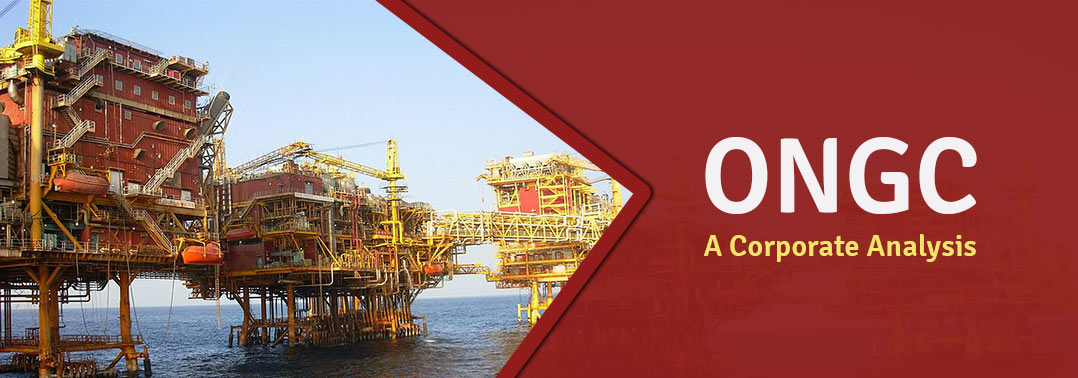
Last year, ONGC (Oil and Natural Gas Corporation Ltd) acquired government’s majority stake in Hindustan Petroleum Corporation Ltd (HPCL). The company, with consolidated revenue of INR 3.6 lakh crore and assets of INR 4.6 lakh crore in FY18, seems to have moved away from its original objective of exploration and development of oil resources. Whether the diversification helps it de-risk its business and undertake exploration work more aggressively, or diffuses its attention from the core objective would be interesting to watch out for.
ONGC is a diversified oil sector company, originally formed as an Oil & Gas Exploration and Production (E&P) company. Oil exploration is a challenging and risky business beginning with study of seismic data, which gives an initial idea of presence of oil/gas underground. Actual exploration begins with digging of wells approximately 40-50cm in diameter and at least 2,000m in depth. If no oil/gas is found in the well, the amount spent is accounted as ‘sunk cost’, to be recovered from revenues generated from other operating wells. It is to be noted that exploration business can be carried out only in the area for which license is given by the government, either on nomination basis or through auction.
Other than domestic E&P, it has a foreign subsidiary, ONGC Videsh Ltd (OVL), to participate in oil blocks available in the international market. Since its inception, total investment in OVL is almost INR 1.5 lakh crore, a substantial amount. The company also acquired Gujarat State Petroleum Corporation’s (GSPC) exploration assets in KG basin during FY18 for a consideration of INR 7,700 crore.
Besides the core business, it has substantial exposure to downstream refining & petrochemicals business also. This is managed by its subsidiaries Mangalore Refining & Petrochemicals Ltd (MRPL) acquired in 2003, and Hindustan Petroleum Corporation Ltd (HPCL) — majority stake acquired in FY18. MRPL is expected to be merged with HPCL to create a single refining entity with total capacity of nearly 40 MTPA. With the acquisition of HPCL, contribution of refining business to total revenue has gone up to almost 50% with core E&P business accounting for nearly 30%.
The company also has subsidiaries ONGC Petro additions (OPaL) involving an investment of over INR 30,000 crore and ONGC Mangalore Petrochemicals (OMPL) engaged in petrochemicals business, largely to process by-products produced by the company which is not fetching enough value otherwise. The strategy, or compulsion, of entering into a non-core business is visible in another subsidiary, ONGC Tripura Power Company (OTPC), the power generation JV, which operates a 726 MW gas-based power plant. The plant has been built solely to utilize the gas produced from its fields in North-East, which was, otherwise, getting flared.
ONGC has total 2P (proven and probable) reserves of 800 million tons of oil and 1,000 million tons of gas. Of these, about 40% is owned by OVL. The company produced a total of 35 million tons of oil and 29 billion cubic meters of natural gas during FY18. Share of ONGC Videsh Ltd (OVL) stands at roughly 40% in oil and 20% in gas. The company also receives about 4 MMtoe from its JVs. Despite efforts, the company has not been able to achieve any breakthrough, either domestic or overseas, in enhancing its production. Its efforts are reflected in the fact that total capex stands at almost INR 2 lakh crore over the last five years.
ONGC's consolidated balance sheet shows total assets of INR 4.6 lakh crore, which is much larger than Indian Oil, the public sector giant engaged in the oil refining segment. Of this, almost INR 2.2 lakh crore has come in the form of equity, implying a comfortable debt-equity ratio. Assets are spread across a number of heads, with oil & gas assets accounting for INR 1.4 lakh crore; and other property, plant & equipment accounting for INR 70,000 crore. Almost INR 40,000 crore is invested in wells under exploration, classified as “intangible assets”. This is the amount at risk, since exploration may not necessarily lead to finding an oil or gas reserve. Investment under development work, the phase after exploration and finding gas, is relatively low, at INR 20,000 crore, possibly a result of relative ease of development in comparison to exploration.
Total income for the company stood at INR 3.6 lakh crore in FY18, nearly a 10% increase over the previous year. However, this includes INR 1.2 lakh crore of purchase of stock-in-trade, largely a pass-through item without much value addition. The major cost item is production, transportation, selling & distribution, clubbed together at INR 1.75 lakh crore. The cost, including change in inventory, has risen from INR 1.2 lakh crore in the previous year. An important item in the expense side is “exploration cost written off” at about INR 7,500 crore. This is the amount spent, but has not yielded any gain to the company. Interest cost is quite low at INR 5,000 crore as a result of limited borrowings. Net profit for the company stood at INR 22,000 crore, a decline of 10% due to higher costs.
ONGC has come a long way from its original mandate, with its core business now accounting for just about 30% of its revenues. While there is nothing seriously wrong with moving up the value chain — most of the world’s mega companies in the field do that — it is important to ensure that the diversification does not diffuse its attention from the core objective. The concern carries more weight since the company has not been able to add much to its oil production over the years. The diversification may help it add to the bottom line and save it from having to answer for not enhancing oil production.
Operationalizing Brexit – What is at Stake?

The process of withdrawal of the United Kingdom from the European Union has become nerve-wracking, with the British Parliament expressing serious reservations. While the negotiations between the EU and the UK had not been as tough as in the earlier case of the much-feared Greek exit, the deal seems to have got stuck in the British Parliament. As per the current legal statute, the UK would exit the EU on March 29, 2019; and both the parties have to enter into a deal before that to avoid disruption to businesses and life, in general.
Here is a look at the economic aspect of the withdrawal, and why an orderly withdrawal matters. The economic separation could be classified into three groups: separation of trade in goods, trade in non-financial services, and trade in financial services. A look at the goods trade shows that it is the EU, which stands to lose more from the separation, contrary to general perception that the UK would be affected more.
This is because the EU’s export to the UK is more than the imports. As per a WTO report, the EU accounts for 53% of $644 bn of goods imported by the UK. Against this, of the total goods export of $445 bn from the UK, only 48% goes to the EU. This implies a trade surplus of about $130 bn for the EU, which may partially come back to the UK after the withdrawal.
However, trade in total commercial services (such as travel, transport, financial services, services linked to goods, etc.) gives a small surplus of $23 bn to the UK. While the UK exports 37% of $347 bn of services to the EU, it imports half of $210 bn from the EU.
Within commercial service comes financial service, which is small in value but is the most complicated of the three segments (while a separate figure for exports to the EU is not available, it could be about half of $83 bn of total exports of financial services from the UK). This is because the integration is much deeper; and unlike other segments, it is largely B2C. More importantly, the net value of exports does not indicate the total exposure, which is capital in nature, or notional in value.
To begin with, as per an IMF report, the UK banks provide around half of banking services to EU customers. Similarly, UK-based insurance companies have liabilities of £55 billion towards nearly 4 crore customers in the EU, whereas EU-based companies’ exposure in the UK stands at £27 billion and 1 crore customers.
The capital nature of exposure is reflected in the fact that the total Assets under Management (AUM) in the UK for EU clients is close to $1.4 trillion (as per the latest Financial Services Trade & Promotion Board, UK’s report). It is the fear of outflow of this capital, which drove down the British currency after the referendum; and continues to put pressure even now (the UK has total AUM of close to $7 trillion, which includes UK, EU, and rest of the world clients). The notional exposure refers to the servicing of derivative contracts, which is the most complicated of all. As per the IMF report mentioned above, contracts with a notional value of around £16 trillion maturing after March 2019 is being handled in the UK for EU clients. Similarly, UK-based clearing agents handle nearly 90% of euro-denominated interest rate swaps with a notional amount of around £38 trillion for EU customers. In the absence of clearly defined permission, the validity of these contracts could be in jeopardy.
An important risk-mitigation measure undertaken by the UK government is that it has agreed to bring in stopgap legislation. That would give temporary permission to EU-based financial companies to continue providing financial services to UK citizens. That would help avoid disruption of services being received by UK citizens from EU companies.
Even after the agreement is reached, both sides would need to get the necessary legislation passed by their respective Parliament, and operationalize the agreement. Subsequently, the companies operating across the border may accordingly need to secure permissions, registrations, and so on. The sequence of events before implementation of GST could give some idea of what to expect in the months to come.
And at the end of this all, one is left wondering, was the separation worth all this?
FRM®: Gateway to A Global Career

If you aspire for a lucrative career in finance, then getting certified in FRM® (Financial Risk Management) is the best decision you can possibly take.
FRM® is a financial certification course offered by the Global Association of Risk Professionals (GARP) that has been setting global standards for 20 years now in risk management. The curriculum imparts knowledge on risk-analysis, evaluation, and mitigation; and challenges candidates to apply a range of skills necessary to function effectively as a risk manager.
In other words, an FRM® certification reflects an in-depth understanding of risk management — particular in controlling, analyzing, or evaluating potential credit risk, liquidity risk, market risk, and non-market related financial risks — which top organizations actively seek to prosper in today’s dynamic financial landscape.
As per a recent report on Indeed, for risk managers, there are currently 12,000+ jobs in India and 1,48,000+ vacancies in the USA. The top employers of risk managers are:
- Investment Banks
- Commercial Banks
- Central Banks
- Asset Management Companies
- Insurance Companies
- Credit Rating Companies
- Government and Regulatory Agencies
- Consulting Firms
- Hedge Funds
- Professional Service Firms
So, with an FRM® certification, you stand the chance of working in some of the top firms in the world, such as Goldman Sachs, UBS, Deutsche Bank, JP Morgan & Chase, Ernst & Young (EY), PricewaterhouseCoopers (PwC), KPMG, Credit Suisse, etc.
FRM® charter holders also command high salary packages, as well as attractive financial incentives. Given below are the average salaries of risk managers employed in India and the USA:
| Firm | Average Salary (INR) |
| American Express | 23 lpa |
| ICICI | 11.9 lpa |
| Wipro | 28.4 lpa |
| JP Morgan | 24.7 lpa |
| Citi Bank | 10.6 lpa |
| Standard Chartered | 12.6 lpa |
| Ernst & Young | 16 lpa |
Source: Glassdoor
| Firm | Average Annual Salary ($) |
| Bloomberg | 1,68,069 |
| HSBC | 1,36,093 |
| Selby | 1,34,045 |
| Deloitte | 1,31,033 |
| PwC | 1,28,674 |
| PayPal | 1,03,061 |
| JP Morgan | 1,02,134 |
Source: Indeed
To conclude, in this era of cut-throat competition and consistent value addition for corporate survival, a certification like FRM® can help you stay ahead of the competition.
At Career Launcher, we offer an FRM® Level 1 preparation program, the details of which you can find here.
Industry Analysis: Dynamics & Financials

The Indian automobile industry witnessed subdued sales during November and December 2018 due to the slowdown in NBFC’s loan disbursal and certain other issues. If the trend persists, that could be one more setback for an industry already bracing itself to meet the BS-VI norms from April 2020. This is over and above the potential disruption that may be caused by electric vehicles and changing customers’ preferences. These factors, together, pose substantial uncertainty, especially in the passenger vehicle space, even though the industry has been performing reasonably in recent years.
The automobile sector is classified into the following segments: 2/3-wheelers, 4-wheelers (PVs), and commercial vehicles (CVs). As per SIAM (Society of Indian Automobile Manufacturers), sales during FY’18 stood at a little over 2 crore units for 2 wheelers, 33 lakh passenger vehicles, 8.6 lakh commercial vehicles, and 6.4 lakh 3-wheelers. Interestingly, all the four segments recorded sales growth in the range of 7–8% during FY’14–18. Other than domestic consumption, the industry is quite active in exports market also, especially in the 3-wheelers segment, where almost 40% of production is exported. The share of exports in PV segment is 20%.
Despite being clubbed together, each segment has its own unique dynamics and market drivers. While the rural income is a primary determinant for 2-wheelers’ sales, 4-wheelers are almost wholly dependent on urban disposable income. On the other hand, commercial vehicles are driven by aggregate economic activity, whereas 3-wheelers are driven by economic activity, increasing urbanization, and lately, entry of app-based aggregators, which are changing the dynamics of the market. The entry of these players and scrapping of the permit system for running 3-wheelers across major cities in Maharashtra and some other states in 2017 have given a major boost to this segment.
Even though the industry is dominated by a few large players, it is highly competitive in nature. So much so that even attempts by players from one segment to enter another have not been significantly successful. For instance, Tata Motors has been struggling in the passenger vehicle segment with less than 5% market share despite having 45% share in the commercial vehicle segment. The competitive nature of the industry is more evident in case of the passenger vehicle segment due to presence of a number of smaller players backed by global majors. In fact, the failure of these companies to create a position for themselves in the market could be an interesting case study.
While there could be a variety of factors, the most important one is not ceding the market by the market leader which has leveraged its first mover’s advantage beautifully. While many of them tried to crack the market through a JV with domestic players, it did not give them any real breakthrough; and a large number of these JVs were terminated. With increasingly more stringent regulatory norms, it would not be surprising if some of them exit the market, like in the case of the telecom sector.
A look at the financials shows that the total domestic sales of the industry were over INR 3.5 lakh crore in FY’18 with net profit of about INR 28,000 crore (this figure does not include JLR sales owned by Tata Motors). Sales show an impressive growth of 11% CAGR during FY’14–18. More importantly, profits have risen at an even better 19% CAGR.
However, as they say, one person’s profit is another person’s loss. Large part of this improved profitability is attributable to the decline in steel prices, as a result of sharp increase in imports from China. Raw material cost for the sector grew by barely 8.7%, leading to 5 percentage point decline in RM/sales ratio. While the operating margin for the sector is a modest 16.7%, due to low interest and depreciation (I&D) charges, just 5.4% of the sales helped it record a net profit margin of 7.5%. I&D charges for steel industry stands as high as 12.5%, and is 8.2% for the cement industry. Even though the segment does invest a good amount of money in product development, the capital investment required for actual production is somewhat low, leading to low I&D charges. Even though the third quarter is looking challenging, results for half year ending Sept’18 was even better than the previous years’ performance. While sales rose by 21%, profits recorded an even higher growth of 34%. The profit growth has been aided by the performance of Tata Motors, which moved from a loss of about INR 700 crore to profits of INR 1,300 crore this half year.
While the near-term growth of the industry looks reasonable, the passenger vehicle is staring at a significantly challenging future in the medium term. The biggest of these is the change in the very notion of 4-wheelers carrying aspirational value, and the consumer shifting from ownership to on-demand transportation. As per a report quoted in Tata Motors’ annual report, millennials in the Asia-Pacific region are 49% more likely to use shared mobility solutions. This, coupled with increasingly more stringent regulations, emphasis on stronger public transport system, etc., can change the industry structure in unimaginable ways; and it would be interesting to watch out for that!
The Value of IFRS
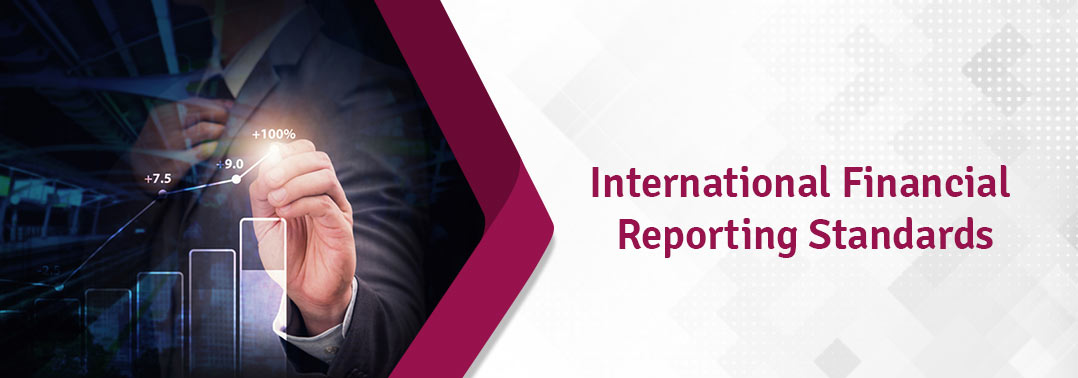
In the world of business, accounting—whose concepts can be applied to almost all job specialties—is a highly prized discipline. With the focus on the domain gaining in prominence, the career prospects of an accountant too have become brighter.
In addition, the emergence of International Financial Reporting Standards (IFRS) as a global yardstick for accounting standards has transformed financial markets—both across the world and in India. IFRS comprises a set of rules on how accounting events like transactions, etc., should be reported in financial statements. The objective behind these Standards is to bring in elements of credibility and transparency, which, in turn, help investors, among others, take informed financial decisions.
At a time when we are rapidly progressing towards a “one world” in accounting, auditing, and corporate governance, IFRS is now being considered a mandatory requirement by an increasing number of corporates. No wonder then, in an economy like India, whose financial markets have witnessed a phased implementation of IFRS, knowledge of these Standards is being treated as invaluable. In fact, majority of finance companies operating in India today have implemented IFRS in their workplace.
So, whether you are an established CA, an accountant, or someone who dreams of a career in accounting, to keep pace with the changes in global reporting & accounting standards, you need to be proficient in the practice of IFRS.
And if you are looking for a training program on IFRS, Career Launcher offers a 4-month course, the details of which you can find here.
The Journey So Far (contd)
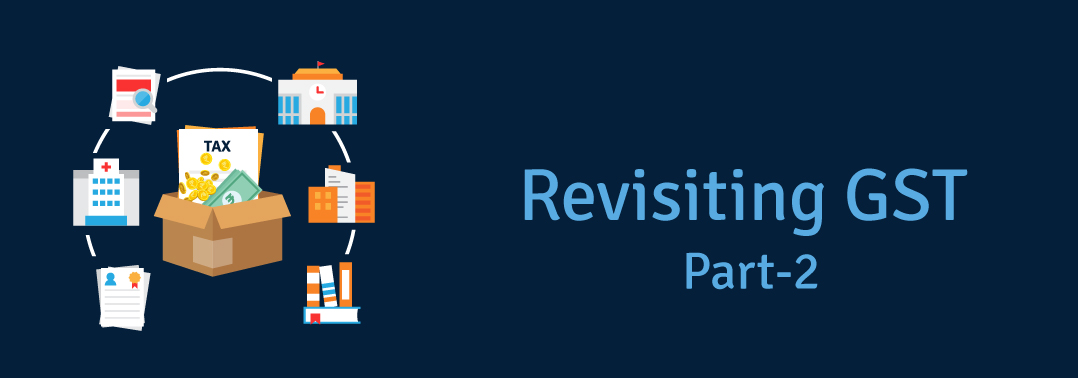
Tax on under-construction property is another case similar to restaurants. While the tax rate here is 12%, the effective outgo would be lower, as builders should pass on the tax credit received on input material. However, builders have not passed on the benefit; and therefore, buyers prefer buying resale properties, which do not attract this tax. The Council is actively considering levying a flat 5% tax, without any input tax benefit.
To reduce the hassles of maintaining records and filing returns for small entities in the manufacturing industry, the Council has increased the minimum turnover limit eligible for the composition scheme. As per this scheme, a business entity does not need to maintain (or file) detailed entries; and can just pay a fixed rate of tax, currently 2%, if its turnover is below the threshold. However, in that case, the business cannot collect tax from its buyers, nor can it claim input tax credit.
The current threshold stands at INR 1.5 crore, revised upward from INR 75 lakh earlier. While the scheme is not available for suppliers, the next Council meeting is expected to take up this proposal. The scheme has drawn attention as a convenient and hassle-free option; and almost 20% of the registered businesses have opted for it.
However, from a tax collection perspective, the tax rate may need to be increased, as the tax mobilization through the scheme is very low. As per data released by the Press Information Bureau (PIB), GST collected through the scheme was just INR 580 crore in April’18, against a total collection of over INR 1 lakh crore.
GST also has an arrangement called reverse-charge mechanism. applicable when the seller is not liable to collect tax (as mentioned in the case above), or if the seller is not a registered entity. In that case, the buyer has to pay tax through this mechanism. To help the economy get used adequately to the taxation, the tax has been postponed to Sept’19 (from Oct’18).
Other than the operational issues, the Council has also taken an important decision of taking control of GSTN (GST Network). GSTN is the IT backbone, which stores the data of all registered entities; and through which, all tax payments and returns filing are done. GSTN was earlier registered as a private limited company in which the government had partial stake. The change was felt necessary, considering the sensitive nature of task being handled by it.
GST has, indeed, made substantial progress towards the objective of formalization. Other than about 65 lakh businesses, which migrated from the earlier indirect tax regime, another nearly 50 lakh entities have registered for GST, implying significant increase in formalization. While there is a chance that these entities have registered only as a legal requirement—and are not making any significant contribution to the revenue—yet, it is an important development.
Despite the substantial rate cuts, GST collection has moved up from an average of about INR 90,000 crore in FY ’18 to over INR 96,000 crore in the current financial year, so far. The revenue collection has exceeded the projections (based on earlier collection pattern) for many of the states.
However, some important issues are still pending. One of these is bringing petroleum products under the purview of GST. Since the government derives substantial revenue from oil taxes, it would be interesting to see at what rate slab these products are brought in. Another issue relates to maintaining and filing returns.
To conclude, despite all the changes, the system still has inadequacies; and may need some more tweaking to stabilize.
[Note: The objective of this post is to provide elementary information about GST, primarily to beginners. A business entity must consult a GST practitioner to understand the fine prints on actual compliance requirements]
The Journey So Far
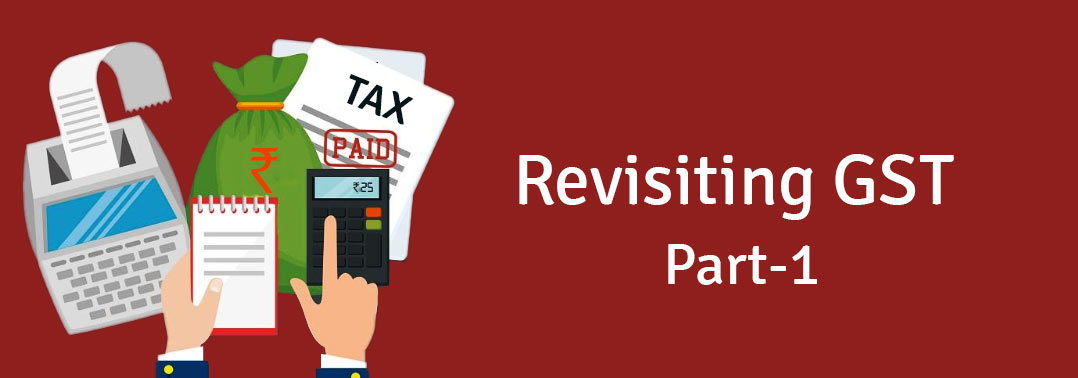
The Goods & Services Tax (GST) has completed 18 months of its implementation; and the developments so far have been encouraging. After the initial months of excessive hassles related to filings, complaints of high tax rates, inconvenience to small entities, and so on, the taxation regime appears to have reduced these glitches substantially. Still, it is a work-in-progress — both operationally, and in terms of its potential to enable formalization of economy, widen tax base, and most importantly, bring about a cultural change from tax avoidance to tax compliance.
The tax information is also expected to help banks assess the credit worthiness of a business (especially small entities), and make lending more efficient and less risky. This should also, going forward, help assess the economic growth in a more effective manner.
Here is a look at its progress and the changes after implementation. Other than the technical glitches, the bigger worry was high tax rates, which threatened the survival of many small businesses. The GST Council has acted quite proactively on this matter; and received substantial praise by cutting rates liberally.
Almost 75% of items saw their tax rates come down from the initial 28% to 18% slab in Nov. ’17, providing a huge relief (the initial rate was based on the then-existing effective tax rate). The Committee has been pruning the list in almost all of its meetings; and just about 27 items remain in the top slab of 28% — from the original 200+ items.
Items, such as, washing machine, small TVs, air-conditioners which cannot exactly be called common-use items, have also seen the tax rates come down from 28% to 18%. Most of the items remaining in the 28% slab are what are called ‘demerit goods’, such as tobacco, etc., and luxury items.
An interesting drawback of GST is that the tax rate looks quite high, especially in the case of the 28% slab, even though this is less than the effective tax rate of 40% earlier (as in the case of automobiles). Since the taxes were levied at different stages, the aggregate tax impact was not getting reflected.
The tax rate cut was followed by measures to ensure that the benefits are passed on to the consumer. GST has a unique anti-profiteering provision, whereby it can levy penalty on a company if it does not pass on the gains of lower tax rate to its customers. Even though it may not be easy to use this provision effectively, it acts as an important deterrent. The anti-profiteering agency has imposed a penalty on a leading FMCG company recently and the case is under litigation currently. The special focus of the GST Council has been to ensure that the gains arising out of GST percolate to the consumers; and do not get cornered by the business entities. This is evident from the modification related to taxation on restaurants. The original scheme involved 12/18% tax rate, with the restaurants getting the tax credit on inputs (this means that in a bill of, say, INR 1,500, if the cost of input was INR 600, the restaurant would have to pay tax on INR 900 only, and not on INR 1,500).
However, this benefit was not being passed on to the consumer. To ensure that restaurants do not get this undue benefit, the tax rate was reduced to 5% WITHOUT giving them the benefit of input tax credit. The measure was a smart one; and shows the alacrity with which the Council has been managing the transition.
[Note: The objective of this post is to provide elementary information about GST, primarily to beginners. A business entity must consult a GST practitioner to understand the fine prints on actual compliance requirements]
The Power of Artificial Intelligence

Here’s a challenge, should you choose to accept it.
First, search online for the name of any established organization that comes to your mind. Add ‘AI’ after its name. Your challenge is to find at least one such instance that is yet to utilize Artificial Intelligence or Machine Learning (ML) or Data Science (DS) for its growth.
It won’t take you long to realize that any organization you can think of is using the power of AI, ML, or Data Science (DS) to expand its business. Examples include YouTube recommendations, Uber AI Labs, Amazon’s product recommendations, Microsoft AI, and Apple AI among others.
But what do the terms AI, ML, and DS mean, one might wonder.
Artificial Intelligence (AI) is a branch of Computer Science that deals with the ability of a machine to closely imitate intelligent human behavior.
Machine Learning (ML) is an application of AI that is based on the idea that when machines are provided new data, they can learn, grow, and develop on their own without explicit human intervention/programming.
Data Science, on the other hand, is an umbrella term that signifies techniques used to extract useful information and insights from data.
With AI, ML, and Data Sciences beginning to rule the global economy and job market and reshape the world we live in, top universities like Harvard Business School have started teaching AI to its MBA students.
In other words, if you wish to be one of tomorrow’s business leaders, it is imperative you learn how to make use of AI, ML, and Data Sciences today!
You can take a step in that direction by to enrolling for Career Launcher’s MBA Plus program.
Sept. 2018 Quarter: Performance Analysis
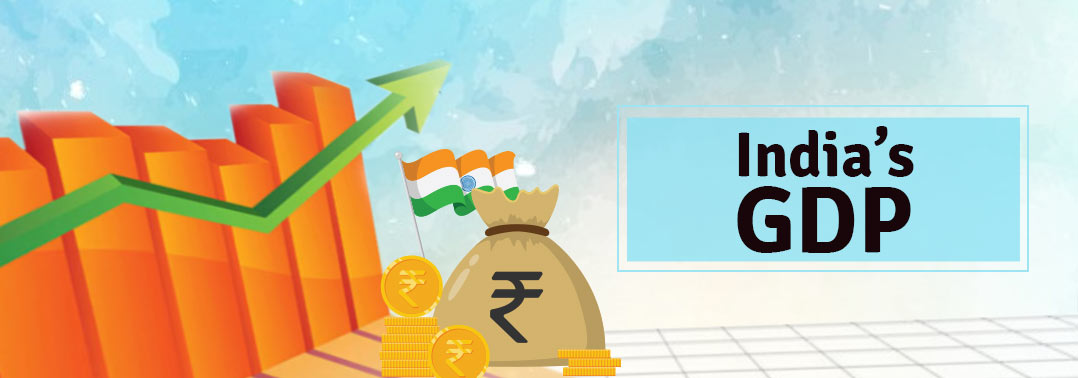
After hitting a high of 8.2% in the June’18 quarter (Q1 of FY’19), the GDP growth of India has slowed to 7.1% in the Sept.’18 quarter (Q2 of FY’19) as per data released by MOSPI recently. GVA growth rate is also along the same lines: at 6.9%, as against 8.0% in Q1.
Even though the rate has moderated over the previous quarter, it is the fourth quarter of 7%+ growth, providing a sense of stability to the economy that went through adjustments due to demonetization and GST. However, issues like sharp rise in crude price or disturbance in the financial market may keep the growth rate under check in the current quarter. In terms of absolute value, GDP at constant price is INR 34 lakh crore and INR 45.5 lakh crore at current prices. GDP estimation (it may not be correct to call it ‘calculation’) is a complex exercise, which begins with calculation of the GVA. GVA is separately reported for eight sub-segments, namely, agriculture (etc.), mining, manufacturing, electricity & other utilities, construction, trade (and other services, such as, hotel, transport, communication), financial (and real estate & professional services) and finally, public administration, defence & other services.
The financial services group has nearly 23% weightage, whereas trade and manufacturing have 17% each. Agriculture and public services account for 10–12% each; and the rest have less than 10% weight.
The GVA calculation is based on data inputs, such as agricultural production, financial results of listed companies, central & state government expenditure, performance of key sectors (like railways, road, air & water, communication, banking and insurance). GDP is, then, calculated by adding indirect tax revenue (minus subsidy) to GVA. Tax revenue used for GDP compilation includes non-GST revenue and GST revenue based on GSTR filings. The figures are, then, deflated by appropriate price indices (which is different for each group) to remove the impact of inflation, and arrive at GDP/GVA at constant prices.
The current series takes year 2011–12 as the base year.
For the current quarter, the public administration segment has recorded the maximum growth (10.9%). The segment is largely driven by government expenditure; and provides a cushion in cases when other segments are not doing well. It has recorded an average growth of 11.1% over the past eight quarters since demonetization, as against just 7.9% in the earlier period; providing some support to the economy. Growth of the manufacturing sector has come down sharply (from 13.5% in Q1 to 7.4% now). The slowdown is, probably, due to sharp rise in crude prices. Yet, the rate is reasonable for the sector, which is trying to stabilize itself.
Another way to calculate GDP is expenditure-side analysis. GDP is classified into three groups: Private Final Consumption Expenditure (PFCE, share 54.5%), Government Final Consumption Expenditure (GFCE, 12.4%) and Gross Fixed Capital Formation (GFCF, 32.3%). The last refers to the money spent on investment.
While PFCE has increased by 7%, the other two have risen by over 12%. As India has been largely witnessing “consumption” driven growth, lower PFCE is actually good for a country like ours. It will help channelize resources into building physical and social productive capacity of the economy, through higher GFCF and GFCE.
The share of GFCF in total GDP has risen to 32.3% for the quarter after hitting a low of 30.3% in FY’16, which is good but not yet sufficient (the share had reached about 37% during 2006–08). It may be noted that the secret of growth of the Chinese economy is GFCF, which has been almost 50% for several years.
A word on agriculture and mining, the two primary sectors. The share of agriculture has been declining steadily, reaching a level of 10.2% in Q2 (from 17.2% in FY’12). Even though the average growth rate has moved up to 4.6% over the last eight quarters (from 1.2% in the previous year), it is still not sufficient.
The condition of core farming is even worse, as most of this growth has come from livestock, forestry & fisheries, which account for over half of the segment’s contribution. The farming sector needs a breakthrough, may be through massive investment in irrigation, mechanization, etc., which will bring about a quantum leap in productivity, like in the earlier ‘Green Revolution’.
The mining sector also offers some insights, although its share is very low (just 3%). It has recorded growth of as high as 20.7%, in terms of current prices, whereas it shows a decline (-2.4%) after using price deflator. The reason being sharp rise in crude prices, which artificially inflates the value produced by the segment. This is reversed, when the production is compared on constant price basis.
Why the Hype Around Business Analysts?

Some of the highest pay packages offered at B-School recruitment drives in India today are for the role of business analyst.
So, why the hype, one might ask? Why are every one after business analysts?
To answer that question, one first needs to have a fair idea about what business analytics is. To quote from an article from the magazine Analytics India*: "Business analytics is used by companies to derive insights from terabytes of data and automate and optimize business processes. Data has become one of the biggest assets; and companies deploy business analytics to predict future outcomes, find patterns and relationships, and perform statistical analysis."
In the same article, the author, Richa Bhatia, gives us an insight into who a business analyst is: “The major role of a Business Analyst”, she writes, "is - data mining, statistical analysis, predictive modelling and multivariate test. The Business Analyst is also required to support decision-making roles with real-time analysis. Business Analysts also work closely with the senior management and provide support in data-driven decision-making that impacts matters related to product development to marketing."
In India, the demand for business analysts is on the rise. Especially sought after for this role are those individuals, who also hold an MBA degree/diploma. There is an entire gamut of sectors that proactively seek these professionals, including retail, banking, healthcare, ecommerce, hospitality, and manufacturing, among others.
In an era where data is increasing at an exponential rate, in both volume and importance, it is business analysts, who organizations will turn to, when it comes to deriving meaning out of data. This will, in turn, lead to insights that will have a marked impact on the performance of the organization concerned.
So, if you have a background in Mathematics and Engineering, and possess sound analytical and communication skills, upskill yourself with Career Launcher’s MBA Plus program to gain a stronghold over business analytics and embark on a fruitful career.
*Source: https://www.analyticsindiamag.com/kickstart-business-analytics-career-in-india/
Fire Yourself Up - Have Fun at Work!

Q: What is involved in a digital marketing job?
A: Doing what most employees are asked not to do, or denied access to! Like surfing Facebook, Twitter, Instagram, Quora, LinkedIn, YouTube, and their ilk.
Actually, the sentence above is not entirely true. Surfing the Net and being on social media sites are just part of the work.
Here’s what a day in the life of a digital marketer looks like:
900–1100 hrs
Plan and schedule organic posts on social media for the day. These can include Facebook, Instagram, Twitter, LinkedIn, YouTube, and Google My Business pages. An important & enviable task is to respond to the comments & messages, i.e., acknowledging and addressing audience interaction.
1200 hrs
Take a look at the Facebook & Instagram ad campaigns. Check for what has worked; and if the campaigns require any edits (in terms of creatives or ad copy). Facebook and Instagram ad campaigns are integral online platforms for a digital marketer to connect with an audience of age 13 and above.
1300–1400 hrs
Meet the Product Managers on any development in the product (or service) offering. Configure creative ways to promote content, events, and engage the audience. Working closely with the product team is key to communicating the right message, and connecting with the relevant audience.
1400 hrs
Grab a hurried lunch, most likely at the desk itself! And on some lucky days in a fancy corner-restaurant, or even in the office canteen (oh, what a luxury!).
1500 hrs
Take stock of the website—if all the pages are fully functional and maximized for SEO management. SEO discipline gives focus on growing visibility in organic (non-paid) search engine results. There are excellent marketers, who deliver amazing SEO ranks without spending a penny on marketing. Yes, that is possible! It involves a mastery of technical and creative elements to improve rankings, drive traffic, and increase awareness in search engines.
1600 hrs
Meet the Product Managers to update oneself on any further development in the product (or service) offering. Think of creative ways to promote content, events, and engage the audience.
1700 hrs
Evaluate the Google Analytics (GA) data for website traffic and engagement. GA is an extremely handy tool to understand the audience coming on to your website, and to derive information such as, new vs returning visitors, the device they use, marketing channels which drive traffic to your website—all of which help in building solid & result-oriented business strategies.
1800 hrs
With the end of the day in sight, send updates on key campaign(s). This could include lead generation, customer interaction, or any other accomplishments of the day.
1900 hrs
Done for the day. Head home-wards!
Sounds interesting? You believe you are ready for the challenge?
If "Yes", then read on; and if "No", well, don't worry. We will talk of other options, a little later.
What are we saying?
Digital Marketing
- Allows you to be agile
- Teaches you data
- Teaches you frugality
- Trains you to be prudent
- Preps you for engagement with today's consumers
- Makes you literally live with, and for, the consumers
- Transforms you to be the consumer's alter ego
Having said that, nothing we have written here can prepare you for the metamorphosis you will undergo (as an individual and as a professional) than a real job in Digital Marketing.
Take that step forward, commit yourself, be that unique individual everyone would die to recruit or learn from.
Come on board!
GMAT/GRE & CAT: A Comparison
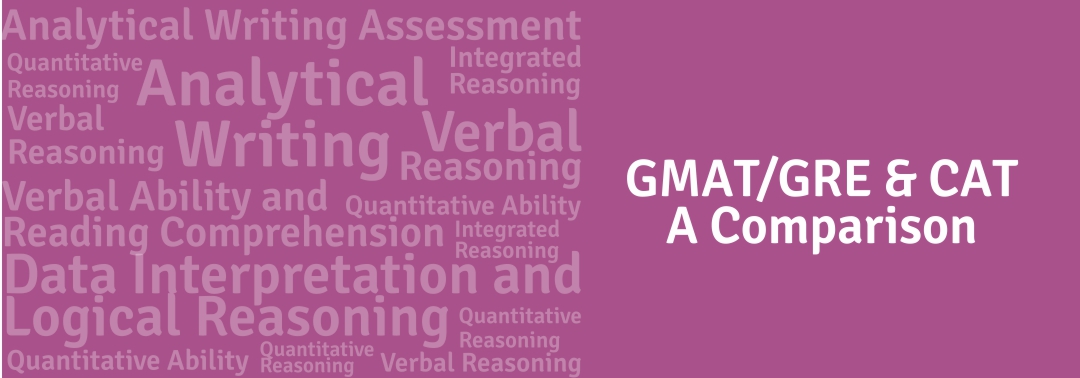
GRE, GMAT, CAT - all entrance tests - assess the potential of aspirants interested in pursuing graduate and postgraduate programs in India and abroad. Though each of these tests is a stepping stone for higher education, students often get confused in deciding which one is suitable for them.
Before getting into a comparative analysis, let us first have an overview of CAT, GMAT, and GRE.
CAT, or Common Admission Test, is conducted by the IIMs to evaluate and shortlist candidates primarily for the postgraduate program in management. As per the IIM authorities, there were around 2.41 lakh applicants for CAT 2018 across 147 cities in India.
GMAT, or Graduate Management Admission Test, is conducted by the Graduate Management Admission Council (GMAC) for admissions to graduate management programs, such as an MBA. GMAT is taken by more than 200,000 candidates every year and is relied on by 7,000+ graduate programs worldwide.
GRE, or Graduate Record Examinations, is a standardized test conducted by the Educational Testing Service (ETS) for admissions to graduate (or master’s degree) programs in business, law, etc., at various universities worldwide. Approximately 550,000 graduate school candidates take the GRE exam per year, across 1,000+ test centers in 160+ countries.
To summarize, GMAT and CAT provide business schools with a common measure for comparing qualifications of candidates intending to pursue higher education in business management, such as an MBA. While GRE is taken by individuals willing to pursue a Master’s of Science (MS), or an MBA.
And to club the similarities among GRE, GMAT, and CAT at a broader level — all three of these:
- serve as entrance tests for postgraduate studies in business management
- are computer-based tests (however, GRE has an option for paper-based test)
- have common sections like Verbal and Quant
Now, let us compare GRE/GMAT vis-a-vis CAT, along various parameters.
Global Acceptability
The CAT score is a compulsory requirement for the IIMs, and is also accepted by several other Indian MBA institutes. But it has limited takers in the international arena.
However, if you are planning to study abroad, the GMAT/GRE score is essential. For example, Harvard Business School, MIT Sloan School of Management, and Stanford Graduate School of Business, among others accept both GRE and GMAT scores for admission into their graduate management programs.
Further, in India, GMAT is accepted not only by IIMs, but also top colleges like ISB, Indian Institute of Foreign Trade (IIFT), XLRI Jamshedpur, IMT, Ghaziabad and many more.
Eligibility Criteria & Frequency
Anyone above 18 can take the GRE and GMAT. Also, there is no upper age limit. These tests can be taken up to five times within any continuous rolling 12-month period (365 days); and the test dates can be chosen as per one’s convenience. You can also retake GMAT once in every 16 calendar days, while GRE can be retaken after a gap of 21 days. On the other hand, CAT can be taken just once a year on the date set by the IIMs. Also, you should be either in the final year, or have completed a bachelor’s degree from a recognized institution to be eligible for CAT.
Test Structure & Duration
| GRE | GMAT | CAT | |
|---|---|---|---|
| Test Duration | 3 hours 45 minutes (with a 10-minute break, following the third section) | 3 hours 30 minutes (two optional eight-minute breaks) | 3 hours |
| Structure |
|
|
|
| Time allotted per section | One “Analyze an Issue” task and one “Analyze an argument” task in 30 + 30 minutes Two sections of Verbal Reasoning Two sections of Quantitative Reasoning |
One question for Analytical Writing Assessment in 30 minutes
12 questions for Integrated Reasoning 31 questions for Quantitative Reasoning 36 questions for Verbal Reasoning |
One hour for each section
|
| Navigation | Allows you to freely move forward and backward throughout a section | Cannot go back to review or change your answer | Allows you to freely move forward and backward throughout a section |
| Pattern | The difficulty level of the next section is based on your performance in the previous section | The difficulty level of the next question is based on your performance in the previous question | Fixed set of questions |
Test Results & Score Validity
In GMAT and GRE, your scores in the Verbal and Quant sections can be viewed immediately after the test, though it takes up to three weeks for the official scores to be published. GRE and GMAT scores are valid for five years.
On the other hand, CAT results are announced much later, on a fixed date (around January) and remain valid for one year.
A comparative analysis between GRE/GMAT and CAT, based on the difficulty level of the sections, is a bit tricky. For instance, depending on individual competency and expertise, Quant of GMAT might appear easier than that of CAT, but difficult compared to GRE.
The best way to find out is to take a diagnostic test for GMAT, GRE or CAT today!
How to Balance your GMAT/GRE Preparation while Continuing your Job?
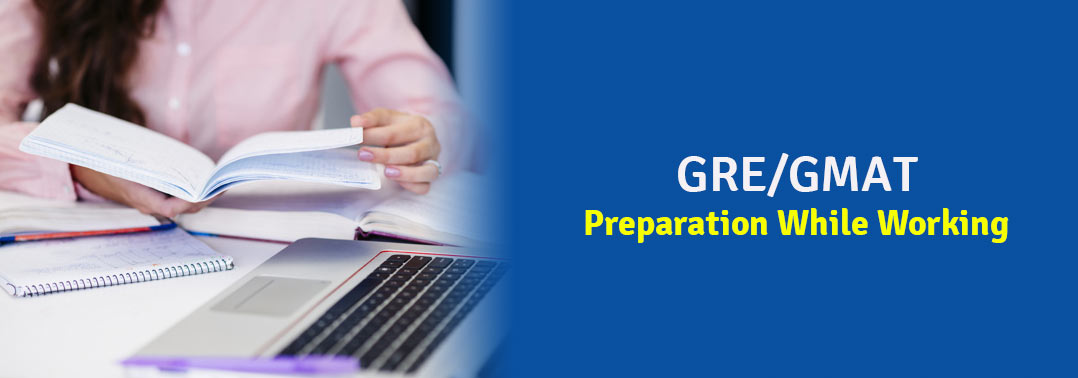
As a working professional wanting to crack GRE/GMAT to pursue an MBA, your learning process transcends beyond the exam curriculum. It also becomes a journey of self-discovery: understanding your level of determination and capability to excel under pressure. The reason being, you have an additional challenge in hand: How to balance your preparation while continuing your job?
The answer often springs a dilemma of "Should I quit my job to prepare for GRE/GMAT, or manage both simultaneously?'
If this rings a bell, then be rest assured, you are not alone. A considerable percentage of the GRE/GMAT aspirants are working professionals between the age of 23 and 40. And many of them have managed to crack the 700 marks barrier to get admission in some of the top B-schools in India and abroad! Plus, having work experience adds weight to your profile.
So, successfully attempting the GRE/GMAT, while having a full-time job, is a daunting task — not an impossible one. Now, let us find out how to set your dream flight on course to your destination.
Check the Ground Reality
One of the biggest advantages of both GRE and GMAT is that they do not have any age restriction for applicants. So, it is never too late for an aspirant! However, you have to be realistic about your mental readiness and physical adaptability to take on the grueling preparation schedule. But don’t beat yourself up over it, because everyone has limitations.
The important thing is to understand your present position (in terms of preparation level), identify your weak points, and develop a study plan accordingly. Taking a diagnostic test is a good start. The results will help you calculate the time, speed, and distance you need to reach your goal.
Set your Destination
While planning your destination — preferred B-Schools — set your target score first. Visit the websites of those institutes; and check their average cut-off score for admission in the last few years. This will give you an idea about the scores you would need, which should ideally be 20–30 points above the average.
Plan a Flight Path
Next, search for a training program that suits your daily schedule. Many classroom training programs have sessions designed especially for working professionals, offering classes once (or twice) a week, or even only on weekends. Also, there are several online courses that allow the flexibility to study from anywhere, at any time.
Just make sure you have experts to help you understand how much you need to improve, and in which sections.
Schedule an Early Take-off
Time is a luxury for every working professional trying to squeeze in that extra 2-3 study hours after a hectic workday. The key is to master time management in two forms: micro and macro.
The micro schedule is where you have to calculate every available hour and minutes within a 24-hour timeframe; and utilize them optimally. Let’s say, like most working professionals, you have to work around 40+ hours, five days a week, which is 8–9 hours/day. After accounting for work, commute, and sleep, you can study for up to two hours on working days. On weekends, however, you can study for 4–5 hours a day. This amounts to a preparation time of 18-20 hours per week; and leads to the concept of time management at the macro level.
The macro form gives you an idea about the length of the runway you need to cover to ensure a smooth take-off for GRE/GMAT. Considering you have a full-time job, you are time-starved as compared to a student who can dedicate 6-7 hours per day for studies and preparation. So, logically if a student needs 3-6 months of preparation time for the scheduled GRE/GMAT, you would take longer. To compensate, you need to start preparing early.
Be Consistent to Maintain Altitude
Assuming, you have enrolled in a course and developed a study schedule for GRE/GMAT, take a look at this scenario: In the first week, you hit the target of 20 hours/week study plan. In the next week, the hours dwindle a bit because there was deadline pressures at work; and by the third and fourth weeks, the study schedule goes for a toss due to, maybe, a sick day, vacation time, and in trying to catch up with the previous missed lessons.
In such cases, consistency is the key to maintain a balance between a stringent schedule and unforeseen events that can disrupt it. Although you have a customized study plan charted out, always be on the look out to squeeze in some extra study time during travel, coffee breaks, or whenever you have a spare 5–10 minutes. Cut out distractions like social media and binge-watching for these few months to remain absolutely focused.
Surrounding yourself with like-minded people is a great way to stay motivated. Try to get in touch with those, who are experiencing the same predicament, through a study group or an online forum. This way, your preparations will become a social activity; and you will be able to remain positive while following, sharing, and reading others’ experiences.
So, hold on tightly through those moments of despair, keep the bigger picture in mind, and hit the ground running on D-day!.
Is Just an MBA Degree/Diploma Enough Today?

All of us have hopes, ambitions, and aspiration—something we look forward to, and hope to achieve some day; something we fight passionately for, at times against seemingly insurmountable odds.
Our dreams have no limitations; but the job market most certainly does. Competition is getting fiercer by the day; and attaining success, as we know it, becoming tougher. Consider the number of students graduating from the IIMs—the crème de la crème of B-Schools in India—as an example. It has risen from around 1,200 in 2000 to 9,500 in 2017*. The number of IIMs too has increased by a whopping 233% over the last ten years.
With thousands of MBA graduates—from the IIMs and other B-Schools of the country—entering the job pool every year, it is becoming critical to distinguish yourself. Add to that the fact that with the onset of the technology era, the demands of industries are ever-evolving, holding just an MBA qualification can no longer guarantee a successful and fulfilling career.
For instance, Machine Learning (systems learning from data and making decisions with minimal human intervention) is fast becoming a much sought-after skill among business leaders. However, the availability of such professionals is shockingly limited. In such a scenario, if a business graduate adds to his/her MBA qualifications, a certification in Machine Learning, he/she fulfils a niche demand. Needless to say, such an individual will also be handsomely compensated, in terms of salary.
So, take the first step towards upskilling yourself. Enroll yourself in a program like Career Launcher’s MBA Plus.
Pick up a skill. Give your qualifications that extra edge. Be ready for tomorrow.
*Source: Dr Uday Kiran. Debunking the myths: Are new IIMs better than novel B-schools that have more to offer. Management Compass, Issue: November, 2018.
Add GMAT to Your MBA Aspiration

In a business-driven world, a Master in Business Administration (MBA) has been, for long, considered the ‘Holy Grail’ in terms of professional success. However, the bubble that ‘MBA is the only gold standard’ is all set to burst.
Times have changed. While getting an MBA degree is still very much a smart move, once you add, say, GMAT to your credentials, your opportunities increase manifold!
The perks of having an additional academic credential polished in an international arena are extremely rewarding. For instance, the Stanford University’s 2017 Employment Report displays a robust market for their MBA graduates. With median and average annual base compensation of $140,000 and $144,455, it undeniably, makes sense — in terms of both career and finances.
While aiming for an MBA, why not target one of the most sought-after exams by MBA aspirants across the world? Not only that, were you aware that performance in GMAT is also a reliable indicator of how successful* you will be in B-School programs?
So, add more value to your MBA aspirations. Opt for GMAT too with Career Launcher’s MBA Plus program.
We are ready to be your wings. Be ready to soar!
*Source: Graduate Management Admission Council. Validity, Reliability and Fairness.
MBA + GMAT: The Best of Both Worlds

You know it in your heart of hearts that you want to do an MBA (or you might already be seated on the MBA train). Yet, at times, do you wonder if just an MBA is going to be enough?
While graduating from one of the top B-Schools in the country is an enviable achievement indeed, but with thousands flooding these B-Schools every year, won’t you be one more candidate in a long queue?
So, how can you ensure you stand out from the crowd?
By adding a GMAT to your credentials!
Did you know that with a 96–97 percentile in GMAT, you will find yourself knocking on the doors of prestigious Business Schools like Harvard, Stanford, etc.? Or that the median and average annual base compensation offered to MBAs from these institutes is an astounding $140,000*?
An MBA, embellished with GMAT, as you can see, can be extremely rewarding. Join Career Launcher’s MBA Plus program. Make it happen!
*Source: https://www.forbes.com/sites/poetsandquants/2018/11/05/what-harvard-mbas-made-this-year-will-shock-you/#44234d567d71
Why You Must Add Industry-Relevant Skills to an MBA

Not so long ago, successfully completing an MBA program from a renowned B-School was enough to ensure social stature, financial rewards, and career growth. Today, however, the stakes have become higher. No longer is an MBA degree/diploma alone capable of helping you get ahead among your peers, and stay ahead in life.
In the increasingly competitive and immensely overcrowded job market, where there is a beeline of B-School graduates, you need to distinguish yourself. One way of doing that, is to upgrade yourself by learning new-age industry-relevant skills, and thereby adapting to the ever-changing demands of the market.
Take for instance, Machine Learning: the development of computer programs that access and use data to learn for themselves. It is fast emerging as one of the most in-demand requirements for almost every industry. No wonder then, organizations are increasingly looking for prospective employees, who possess knowledge on this ever-evolving domain.
So, do not settle for just an MBA qualification from a good B-School. Based on your interests, top it up, add value to it, by homing in on one of the new-age skills that are gaining traction in the industry you wish to be a part of.
Enroll yourself in a program, like Career Launcher’s MBA Plus to pick up the nuances of the skill; and soon enough you will prove yourself to be an invaluable resource for those you work for.
Be skilled. Be up-to-date. Be ready for the world of tomorrow.
How Early Should You Start Preparing for GMAT?
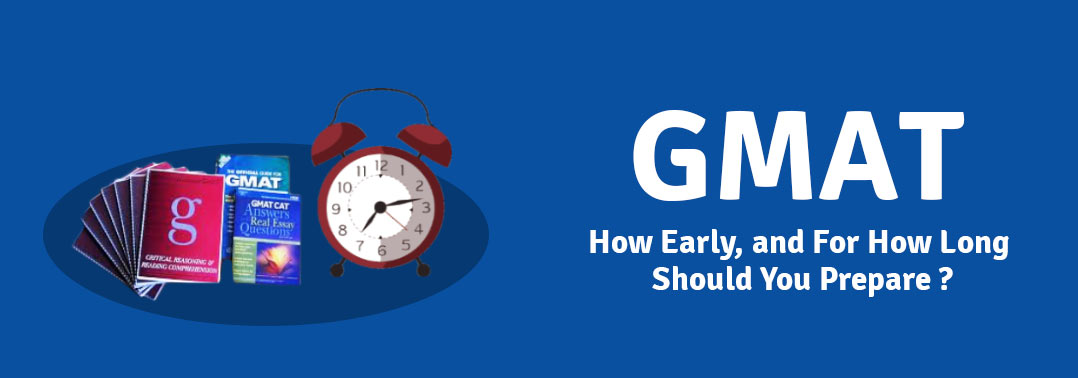
If you are planning—or have already decided—to take GMAT, your journey can be broadly divided into the following three stages:
Aspirant: The span of time when you are gathering information about your target B-schools, and training/preparing for GMAT.
Applicant: You have cleared GMAT with a satisfactory score; so, you are sending applications to different B-schools, and preparing the essays, profile, etc.
Candidate: You have been selected by one or more B-schools; and now, you are at the final decision-making stage, while processing the necessary documents for admissions/departure.
While discussing about preparing for GMAT, we will be primarily covering the stage of an ‘aspirant’; and eventually, how it will lead you to become a successful ‘applicant’ and ‘candidate’.
But before that, let’s take a brief overview of few time-based features of the exam.
First, you can sit for GMAT five times within a rolling 12-month period (i.e., within 365 days from your first attempt) with a gap of 16 days between successive attempts. You can make eight such attempts in total in your lifetime.
Second, your GMAT scores are valid for the next five years from the time of your attempt; and are available for reporting up to 10 years, after which they are no longer made available.
Third, except for the lower-age limit (at least 18 years), GMAT has no age bar for aspirants to appear for the test.
So, GMAT takers get enough flexibility to plan and decide on their attempts, and waive the pressure and anxiety of missing out if the score from the first attempt is not satisfactory. However, there is a pitfall. Often, this lack of strict schedules tends to bring in a sense of carelessness. You need to keep in mind that, although you do not have any time restriction on when to attempt GMAT, universities and B-schools (both in India and abroad) adhere to a strict timeline for admissions and new sessions.
Thus, it is crucial that you plan your exam schedule in tandem with the admission deadlines of the B-schools of your choice.
Now, taking into account that you are willing to take the GMAT and apply right away, we will address the question of ‘How early, and for how long, one should prepare for GMAT?’
It is understood that the preparation time for GMAT varies from one individual to another, based on his/her capacity to grasp new concepts, the level of confidence, circumstances (whether they are a student or a working professional), etc.
Once you have registered for the GMAT, take a diagnostic test to assess and understand your present position and level of preparedness.
The test results will give you a fair idea about your areas of strength & weakness, time allocation for each section, overall speed to finish answering the paper, etc.
Generally speaking, you should start preparing 3–6 months ahead of your GMAT schedule, with an average study plan of 10 hours/week. But avoid cramming over the weekends, or weeks before the exam. Similarly, if you start your preparations too early, the schedule can become tedious and monotonous.
So, what is an organized and target-based preparation plan that will yield best results, while leaving some room for corrective actions?
Let us take a calendar-based example to understand how you can create a timetable for preparation. Usually, B-schools abroad conduct couple of rounds of admissions. The deadlines of application for most of these schools are:
Round 1: First week of October
Round 2: First week of January
Suppose, you are planning to get admission in a B-school in 2020; and you are targeting the Round 1 period to send your applications. Now, let us work backwards to understand the time allocation and calculations for your GMAT attempt.
To prepare the applications and write the essays, including the multiple rounds of iterations, one usually requires three months after completing GMAT. So, if your application deadline is October 2019, you should take the GMAT by end of June, 2019.
And when we say ‘take the GMAT by end of June’, it need not necessarily be your first and final attempt. In fact, worldwide, GMAT is attempted more than a quarter of a million times each year, and approximately a fifth of them are repeat candidates. So, it is commonplace for aspirants to retake the GMAT to improve their scores. Thus, you should have at least 16–30 days in hand to make a repeat attempt.
Which means, ideally, your first GMAT attempt should be around April–May, 2019.
Now, going by the recommendation that you should start studying around 3–6 months prior to your first GMAT attempt, November–December, 2019 is the time to begin your preparations.
Having said that, if you wish to study in one of the top B-schools, you should be buckled up already! Career Launcher offers online practice questions and test-taking tips to help you reach the 700+ score milestone. So, register, learn about the sections and question types in detail, calculate your timing and pacing, and begin work on your areas of weaknesses.
Remember, with proper planning and preparation, you will smoothly make that transition from an aspiration to a candidate.
Best of luck!
The Importance of a Good GMAT Score in Getting into Top B-schools Abroad

A good score. Essays. Applications.
As a GMAT aspirant, these words must be buzzing in your mind most of the time. And, if it is your dream to get into one of the top B-schools abroad; and, subsequently, make it big in the corporate world, a good score in GMAT should be your first step.
So, the pertinent question is: “In GMAT, how much ‘good’ is good enough to assure me a chance of admission into a top B-school abroad?”
Before answering, let’s begin with the relevance of GMAT.
Business management aspirants often get confused with the flurry of management admission tests being conducted by different academic bodies worldwide. Which one should you attempt? In a nutshell, CAT and MAT are conducted by—and for— management institutes in India only. Whereas, GRE is popular for getting admission opportunities and career facilities abroad. However, of late, few Indian universities have started to accept GRE scores for admissions.
Among all these competitive exams, GMAT is one of the most widely used for graduate business school admissions, both in India and abroad. As per GMAC, the conducting authorities of GMAT, ‘…it is relied on by more than 7,000 graduate programs worldwide, and 9 out of 10 new MBA enrollments globally are made using a GMAT score.’
So, GMAT offers you, perhaps, the biggest selection pool and widest range to choose from the top-ranking business school/universities abroad.
Now, let’s clear this ambiguity around a ‘good GMAT’ score. The trend shows that a mean GMAT score of 556.04 gives you a ticket to apply to the well-respected B-schools. This means, anything above (or around) 560 is just a fair chance to get an entry pass to the auditorium only. But, to get the seat with the best view, you have to reach closer to the perfect score of 800.
As an Indian GMAT applicant with a score of above 600 (or under 700), you stand in good stead for Indian B-schools like ISB, IIMs, and others. In case of top B-schools abroad, including the likes of Stanford, Wharton, Harvard in the USA, or INSEAD and IE in Europe, the average GMAT score ranges from 650–730.
The Higher the Better
The more the merrier – this idiom does not always hold true for exams; as, in reality, human intelligence and competency cannot be assessed based only on the numerical values of a scorecard. However, a GMAT score of 650 (or 75 percentile) or more certainly correlates to your zeal and diligence to get admitted in a reputed MBA program.
There is a practical reason for this. The admission officers at the university desks receive thousands of applications. They have to scout around for the eligible candidates from that heap, without any opportunity to know—or meet—them personally. So, a GMAT scorecard with a higher percentile is an easy, and logical, filtering process to list the prospective ones.
Furthermore, B-schools are constantly vying for higher rankings to get attention of the top industry recruiters and placement agencies. And, students with good GMAT scores set the benchmark for top-ranking schools.
Better Future
If the university admission desks are the entry-level judges, then there is another set that keeps an eye on your GMAT scores in the long run, namely, the recruiters. Many top business houses and organizations with an agenda to recruit the best (and diverse) talent pool prefer B-schools that use GMAT score. And, more often than not, students with competitive GMAT scores often tilt the placement decisions in their favor.
Advantage You
As GMAT is an exam ‘created by business schools for business schools’; interpretations of a ‘good’ score are manifold for the sought-after universities. First, it is believed that the GMAT questions are set based on the pattern and content of the curriculum of these universities. So, a good GMAT score means you are better prepared for the first year.
Another intangible aspect of achieving a high score in GMAT is that, if you can succeed under the pressure of the exam, you are better equipped to handle the pressure of the rigorous management programs of the elite universities/institutes.
Further, a high GMAT score helps strike a balance with the other criteria of admission to a B-school, like the GPA, essays, profile, experience, accomplishments, etc. For example, Harvard Business School takes great care in creating class profile that is diverse and creative. However, the average GMAT score for admission in HBS is around 737, which is highest amongst the universities using GMAT score. So, profiles are important, but a good GMAT score often eases the pressure of the painstaking effort to create a profile and perform extraordinarily in your GPAs.
More Power to You
Last, but not least, remember, it is all about you. If you are reading this blog post, then either you already have a plan, or you are in the middle of the process of cracking the Quant, Verbal, AWA, and IR questions in GMAT. So, if you are putting in the effort, then the power to make a choice should be yours too.
And, a good GMAT score yields that power for you.
To conclude, whether you are preparing for GMAT next month, or next year, here are some valuable tips to score above 700 in GMAT.
Welcome, 2019

As another year ends, it’s time for a new beginning—a fresh start.
With every year comes the opportunity to make our life better by learning from the mistakes we made, letting go of what was bad, and carrying forward all that made us happy.
While celebrating a New Year with lots of excitement, happiness, dance, and masti, we tend to forget the most crucial element: a new chapter in our lives can only be written if we leave behind all our bad experiences.
I have heard many people making "New Year Resolutions", which means what they will (and will not) do during the year.
In simple words, a resolution is nothing but to forego, forgive, and follow.
But my question, dear reader, is: Do you stick to your New Year resolutions after a month? Usually, the answer is "No". More often than not, we make resolutions and jot them down on a piece of paper, simply to celebrate the New Year in a different way. Sometimes, this is done because it is a trend—especially among youngsters, to tell their friends.
In my opinion, resolutions should be made with the specific objective of ensuring the new year is better than the last one. You do not need to come up with many resolutions; just decide on one (or two), but work on it/them. Avoid making false promises to yourself in the beginning of the year. Be who you are. Trust me when I say, only an enjoyable today can lead to an enjoyable tomorrow.
Here are some tips for a fresh start in 2019:
- Do not compare yourself with anyone (not even with your sibling)
- Forgive all bad experiences (all means ALL; however, do not forget the lessons you learnt from them)
- Carry forward only the good (happiness is key)
- Live your present (enjoy life to the fullest, after all, zindagi na milegi dobara)
- Find new ways to make yourself happy (remember, a smile not only feels good but also makes you look good)
- Make your close ones happy (be it your parents, friends, siblings, relatives…)
- Learn to adjust at times (don’t be inflexible)
- Spend time with those who make you happy (choose the right people)
Wish you all a very HAPPY NEW YEAR!
The Impact of Social Networking

Social networking has engulfed our lives to such an extent that the current generation cannot imagine a moment without Facebook, Twitter, Instagram, etc. I have seen individuals so engrossed in social media that they are completely unaware of what is going on around them. Like me, you too must have come across jokes, memes, and images shared on Facebook and WhatsApp on how even parents have taken to social networking, while neglecting their kids at home!
While I too have laughed at some of those forwarded messages, but I think the matter needs to be taken a bit seriously. Having said that, I am not one of those who believe that social networking has only downsides. There are, in fact, several ways in which social media have impacted our lives in a positive manner. These include:
- Communication has become a lot easier. We can now get in touch, and maintain contact, with our near & dear ones from any part of the world
- Social networking has brought governance closer to the people. There are numerous instances of political leaders and government officials using social media to interact with citizens
- Finding a job has become so much faster & easier. All one needs to do now is to build a profile online, and start applying
- With social media acting as a level playing field, there has arisen healthy competition among businesses that are marketing their products online
- The importance of opinions, views, and reviews of customers, who can now share their experiences at the mere touch of a button, has become paramount
- With the proliferation of social media, it has now become extremely easy to be aware of what is happening in the world around us, helping people in need (be it in times of a medical emergency or a natural calamity), and meeting like-minded people.
And now, for the negative aspects:
- Social networking puts pressure on its users to depict their lives as happier and different from others. This can result in stress, anxiety, and depression
- Body image has now taken center stage. The pressure to look fit, attractive, and beautiful can lead to unbearable stress, especially among the youth
- Being extremely addictive, social media are today a major cause of distraction for students
- There has been a spike in disturbing trends like taking selfies at places where one’s life can be at risk
- Instances of cyber bullying and threats from strangers have witnessed an alarming increase
- Face-to-face interactions are taking a backseat to virtual communication
- Many are taking the advantage of anonymity that social media entails by posting hateful and offensive posts & comments
- Fake news circulated with the sole intention of misinforming the public and inciting a reaction has become a bane to society
These negative impacts, however, are not insurmountable. All it requires is being vigilant and generating awareness.
So, just like any other form of technology, use social networking and social media responsibly, rather than allowing it to control you.
Spread the word!
Identify Your Interests. Match Them with Your Career

Today, parents and children alike feel confusion, bordering on depression, while finalizing which career to opt for. More often than not, a decision is taken based on the opinion of friends & neighbors, and under duress of peer & family pressure; while at times, it is dictated by the option that is currently enjoying a boom in the market.
Consequently, students end up in a situation, where they are either uncomfortable about the subject(s) they study; or, find it increasingly difficult in coping with the demands of their stream; or, lose interest altogether. Irrespective of the reason, they stop putting in their 100%; and slowly lose command over what they are studying.
The final result: not only do they not get good jobs, but the scope of further opportunities also dries up.
A relevant question that arises is: How do we select a career? Alternatively, which is the best way to select a career? The answer is, in fact, quite simple, but often we are not ready to devote the time, effort, and attention it entails.
To begin with, parents need to accept that every child is different; and is born with some or other unique set of skills, abilities, and capabilities. This is the first step in ensuring they do not take a wrong decision, for which their child pays penalty throughout his/her life by struggling in a job they do not like, which might lead to depression, or some other ill-effect.
So, while choosing which career to opt for:
- Consult a career counselor/expert, who, through a personality test of the child will pinpoint his/her strengths, weakness, interest areas, and other relevant aspect that even the child himself/herself might be unaware of
- Confer with a teacher the child is close to, who will provide an unbiased view about his/her capabilities. Keeping in mind, a teacher can easily identify the strong and weak points of each of his/her students, he/she can be the ideal person to act as a guide in taking this crucial decision
- Have family members, and even family friends, contribute in deciding a child’s career. However, chances are their views will be through rose-tinted glasses. The reason being, family members tend to be partial towards traditional careers, such as engineering & medical sciences that they consider safe & secure, while neglecting options like law, mass communication, fashion designing, management, and others.
Choosing a career is one of the most critical steps in a child’s life. Neither can it be imposed, based on what others are doing, nor can it be ascertained by what is currently in fashion. The key lies in identifying each child’s unique capabilities and interest areas; and then homing in on a career option that is in sync with his/her personality.
The Value of Time

There is a famous English proverb: "Time and tide wait for none".
Although very old, but this saying holds true even today. Time, definitely, waits for nobody. It comes and goes as it pleases; and cannot be persuaded to do otherwise by money or position.
I want you, dear reader, to understand how precious time is. The reason being, it is only when we realize its value, I believe, are we able to utilize it optimally.
Whether it is a child, a youngster, an old man or an aged woman, time has its own importance in everyone’s life. The challenge is to take the correct decision regarding where, when, and how it should be spent so that one can extract the maximum benefit out of it.
In other words, each one of needs to make sure that time—and the golden opportunities it carries with it—does not slip away unnoticed.
To do that, we need to take concrete steps regarding how we are going to use our time (i.e., what all we are going to do with it). To begin with, we can create a timetable for ourselves. That way, we will be able to divide the time at our disposal for the various tasks & jobs at hand
Remember, the key to success is not only proper planning but its effective implementation.
I have always found the following words by the famous American author Earl Nightingale to be a wonderful summary of how valuable time is in our lives: "Learn to enjoy every minute of your life. Be happy now. Don't wait for something outside of yourself to make you happy in the future."
NPAs, Provisioning, and the Rest
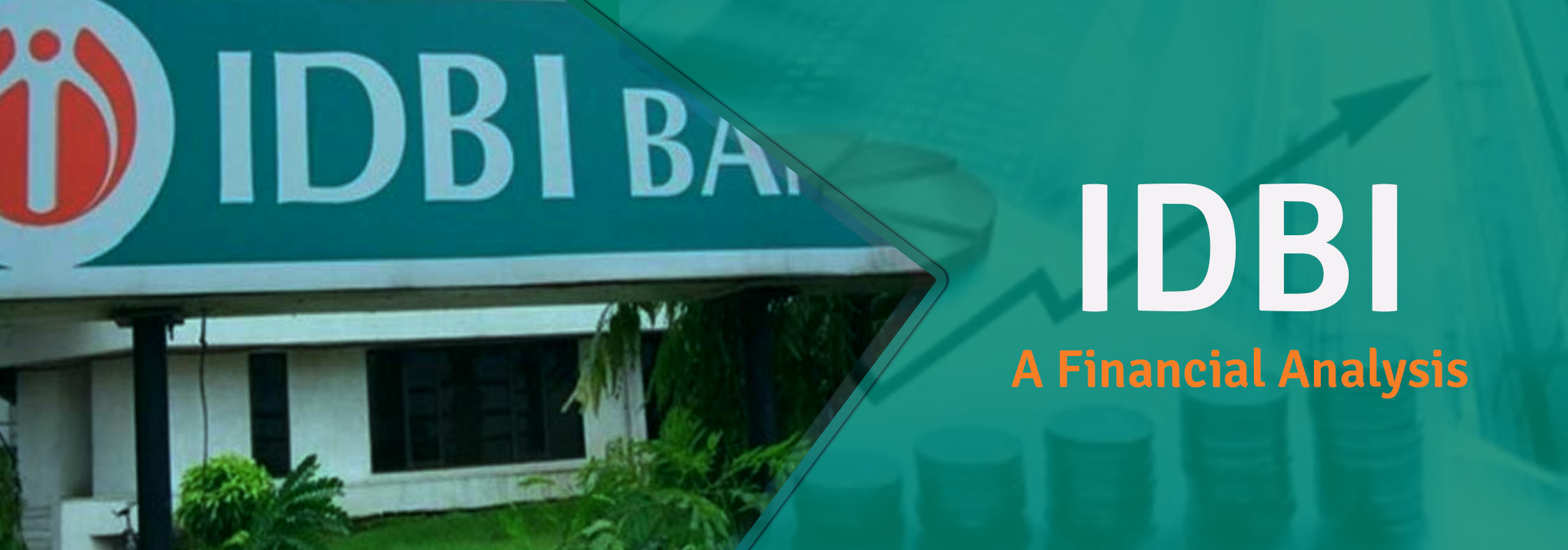
IDBI Bank continues to remain in deep NPA mess, as per the financial results for the quarter ended Sept’18. With provisions of about INR 10,000 crore towards NPA during the first half of this financial year, its total provisions have gone up to INR 33,000 crore — covering about 68% of expected loss (Provision Coverage Ratio). Yet, the banks’ core operations have sufficient strength; and acquisition of majority stake by LIC should give it the financial resources necessary to tide over this crisis.
Here is a brief discourse on its NPAs and other financials.
IDBI Bank is among the large public sector banks of India, with a total balance sheet size of INR 3.26 lakh crore at the end of the quarter ended Sept’18. The balance sheet has shrunk over the last six months — from INR 3.5 lakh crore after being put under PCA (Prompt Corrective Action) watch by the RBI. While the bank was among the efficient entities, the skeletons began to tumble with the imposition of stricter norms for recognition of NPAs by the RBI in 2015–16. NPA discourse centers on the amount of loan given, total amount of loan under default, amount of money set aside by the bank to compensate for this loss, and any amount from this loan portfolio which comes back to the bank (the last is important as a number of loan portfolios starts paying up if the economic conditions improve).
Of the total capital available with the bank, gross advances (or loans given) stand at INR 1.91 lakh crore in Sept’18 (rest of the money is invested in government securities or parked with the RBI). Out of this amount, as much as INR 61,000 crore have turned NPA, implying a gross NPA to advance ratio of as high as 31.8%.
This is an abnormally high figure; with any ratio above 10% being a cause of alarm. However, this does mean that there is no chance of this money coming back. If the borrower settles past dues, and starts paying regularly, the loan account becomes regular again. The defaults are further classified based on the period for which the money has been outstanding. Against these bad debts, banks have to make provisions, depending upon the period for which the loan has been unpaid. Provisioning is made from the bank’s operating profit; and if the profits are not sufficient, by reducing its equity capital. Sharp reduction in its equity capital, despite fund infusion by the government, is the reason the government finally decided to ask LIC to acquire the bank.
IDBI has made provision of about INR 10,000 crore in the first half of FY’19, INR 17,500 crore in FY’18 and INR 11,000 crore in FY’17 towards NPAs. The sharp escalation in the level of its bad debt is evident from the fact that more than 80% of its provisioning has been done in the last 2.5 years alone. Gross NPA during this period went up from INR 25,000 crore (FY’16) to INR 45,000 crore (FY’17); and stands at about INR 61,000 crore (Sept’18).
However, not all loan groups are defaulting on their loan obligations. The biggest culprit is the large-scale industries sector, whose bad debts stand at INR 47,000 crore against total advances of INR 89,000 crore. This translates to an NPA ratio of as high as 53%. Corporate advance for the banks is also high (at 55% of total advances) — lot higher than the banking sector average of about 45%. Indiscriminate lending to the corporate sector, which has turned into NPA, goes against the prudential norms; and have invited charges of mala fide lending practices.
While the high level of NPA remains a huge concern, there are some signs that things might be improving. First, fresh slippage has come down from 11.7% in March’18 to 2.7% now. Slippage refers to loan account that defaulted on their obligation during that specific period. Second, the bank’s recovery from defaulting accounts and loan accounts, which have started paying back, has increased from just about INR 8,000 crore in FY’17 to INR 15,000 crore in FY’18 (gross NPA figures are net of this amount). With increased recovery and improving economic conditions, the recovery rate might increase further going forward.
While the NPAs remain, the crisis has led the bank tighten its belt in other areas. Its cost of funds has come down substantially (from 6.5% to 5.6% in FY’18) with increase in savings deposits. It has also managed to reduce its operating expenses, which, together with lower cost of funds, helped increase its operating profit to INR 7,900 crore in FY’18 (an increase of as much as 70% over the previous year). However, operational gains seem to have dissipated during H1’FY19 due to lending restriction, which reduces the income while the costs remain largely fixed. Funds infusion by LIC and resumption of normal operations should help it come back to health.